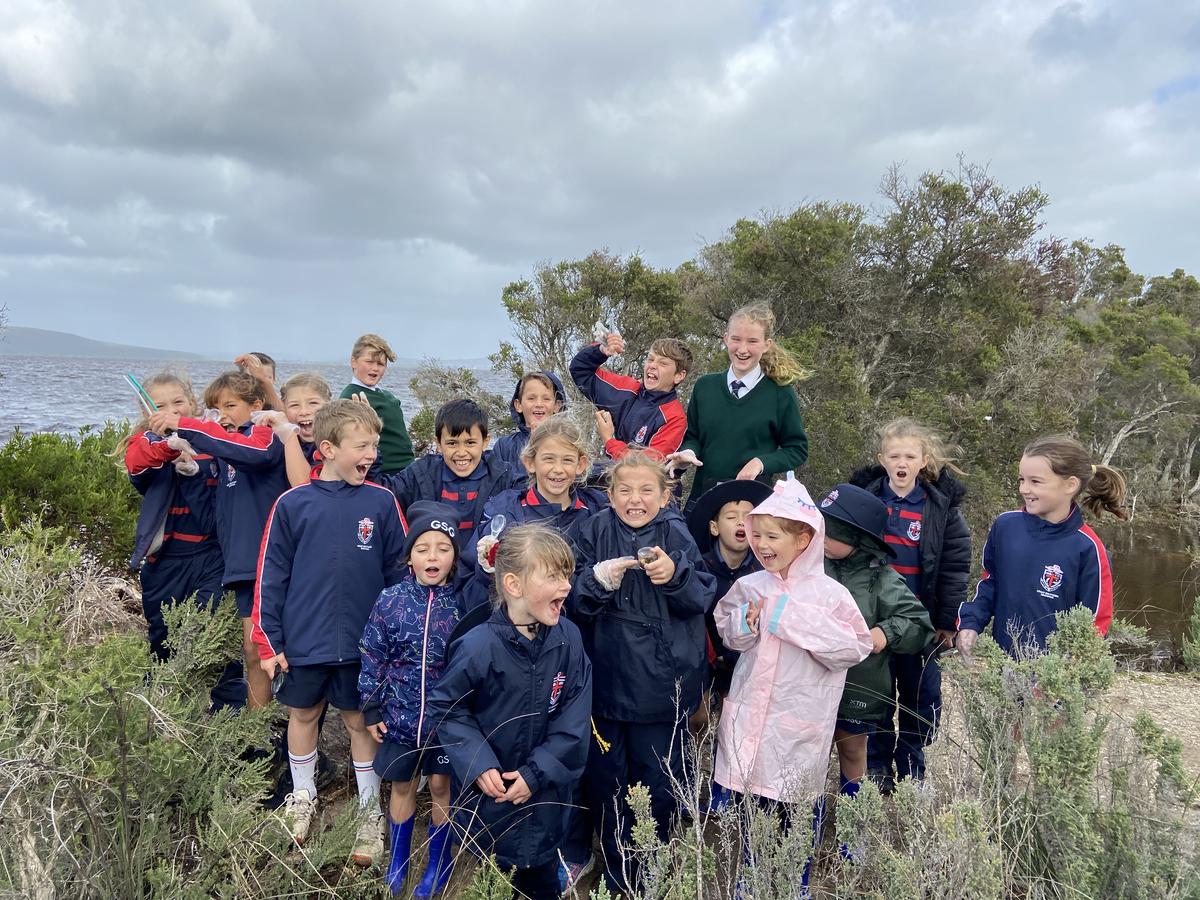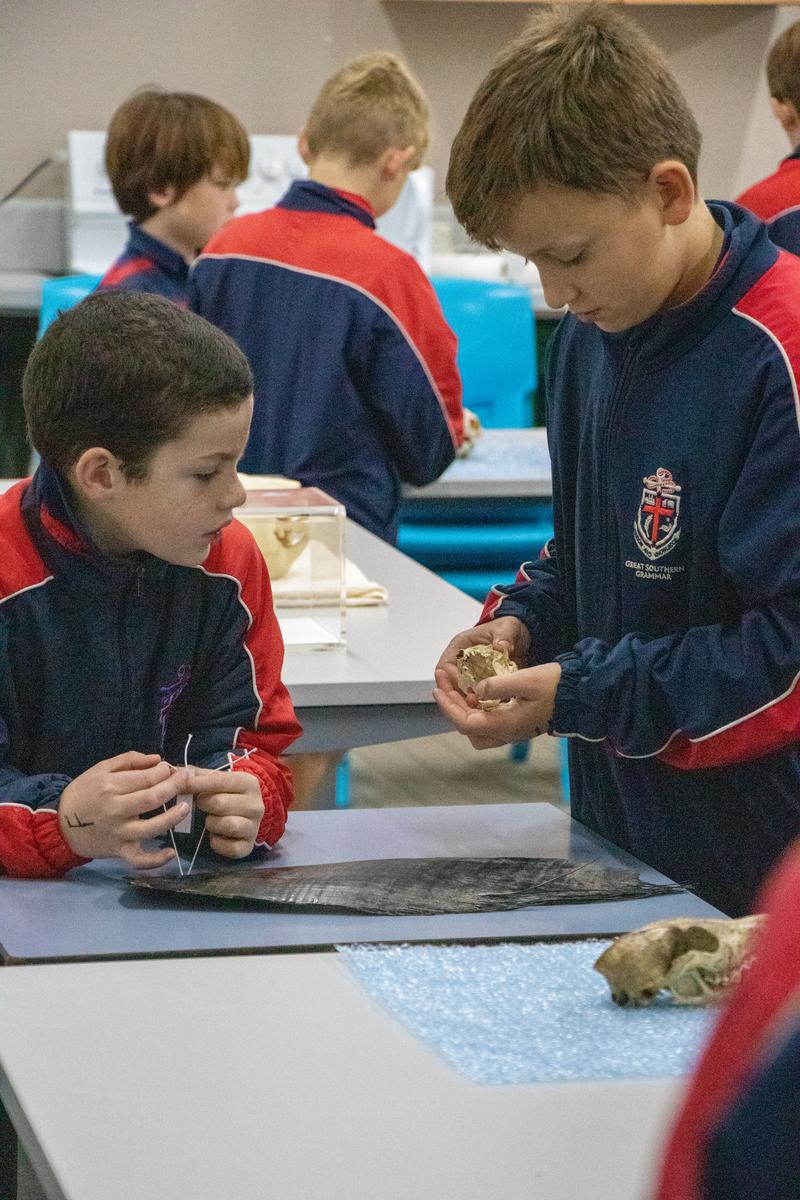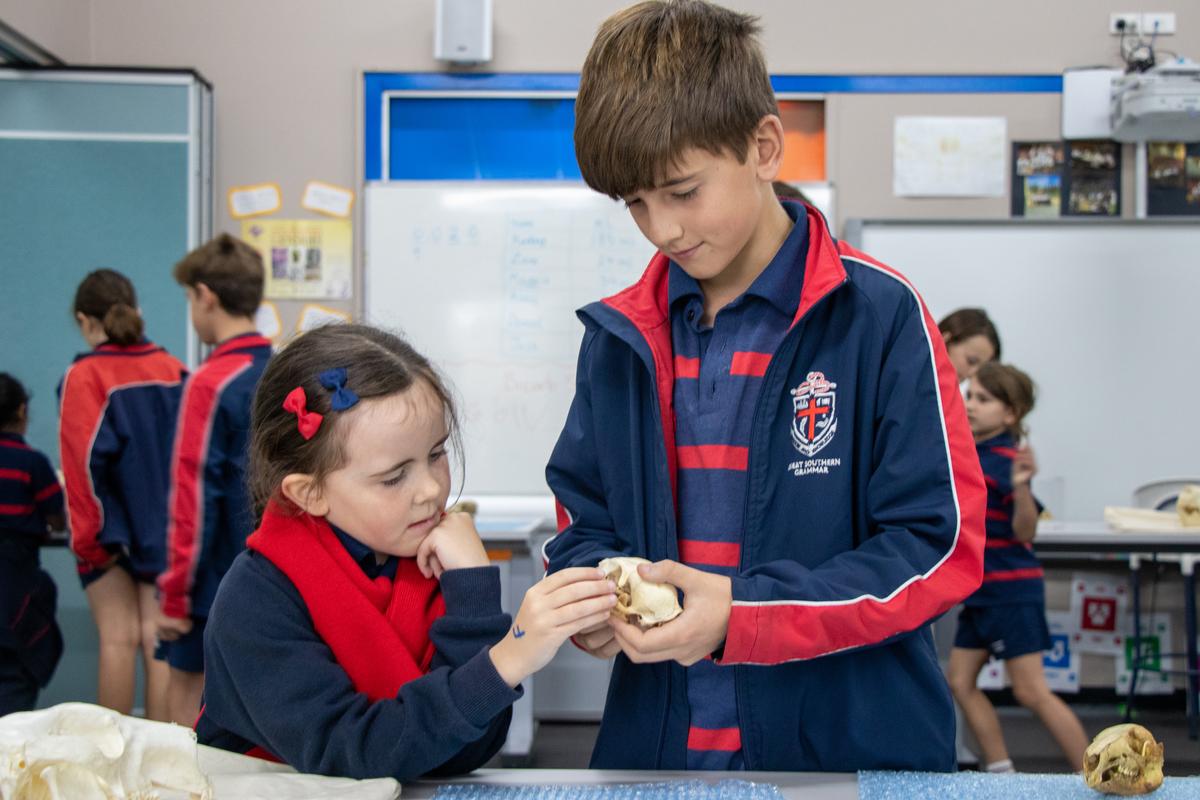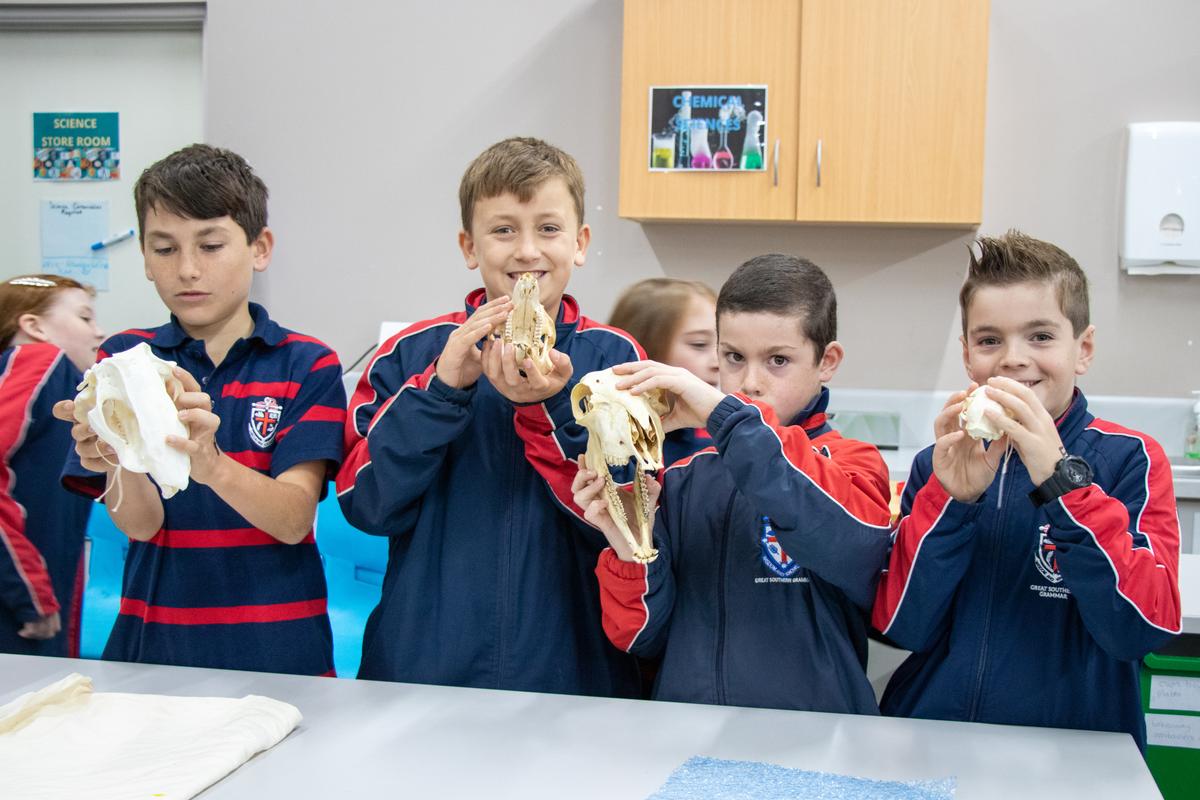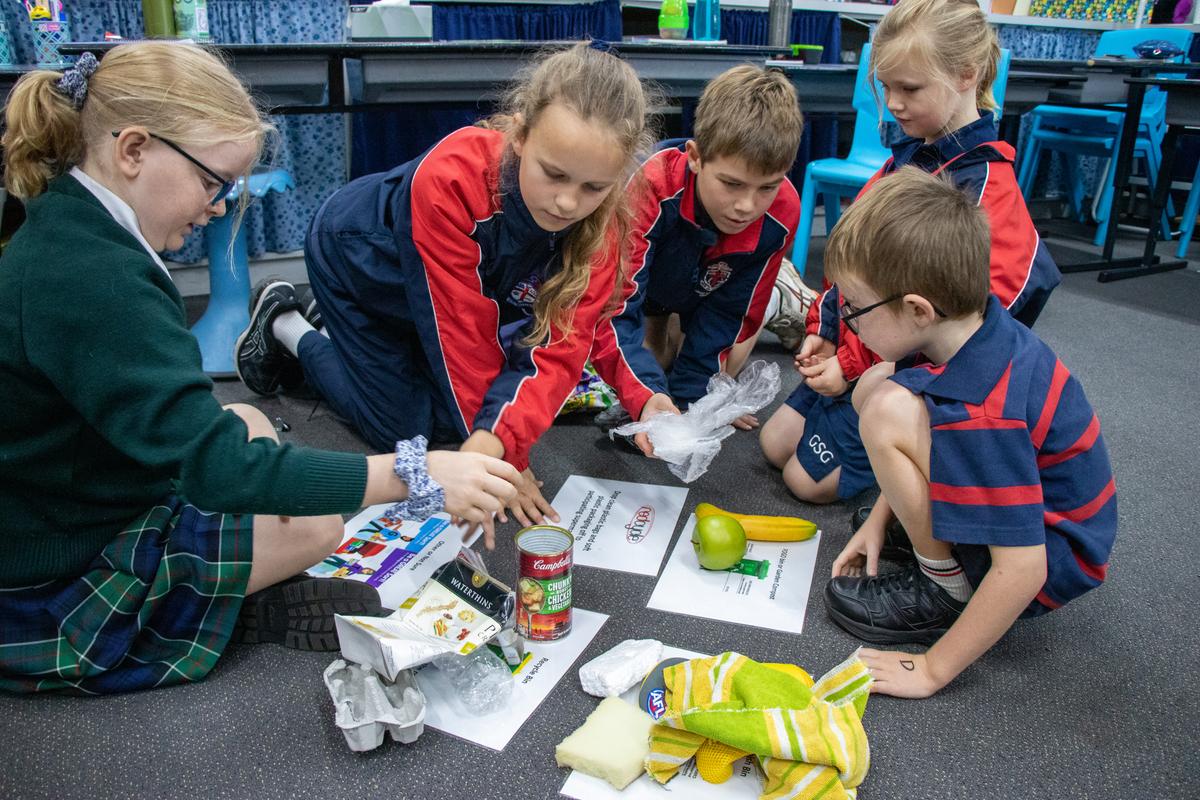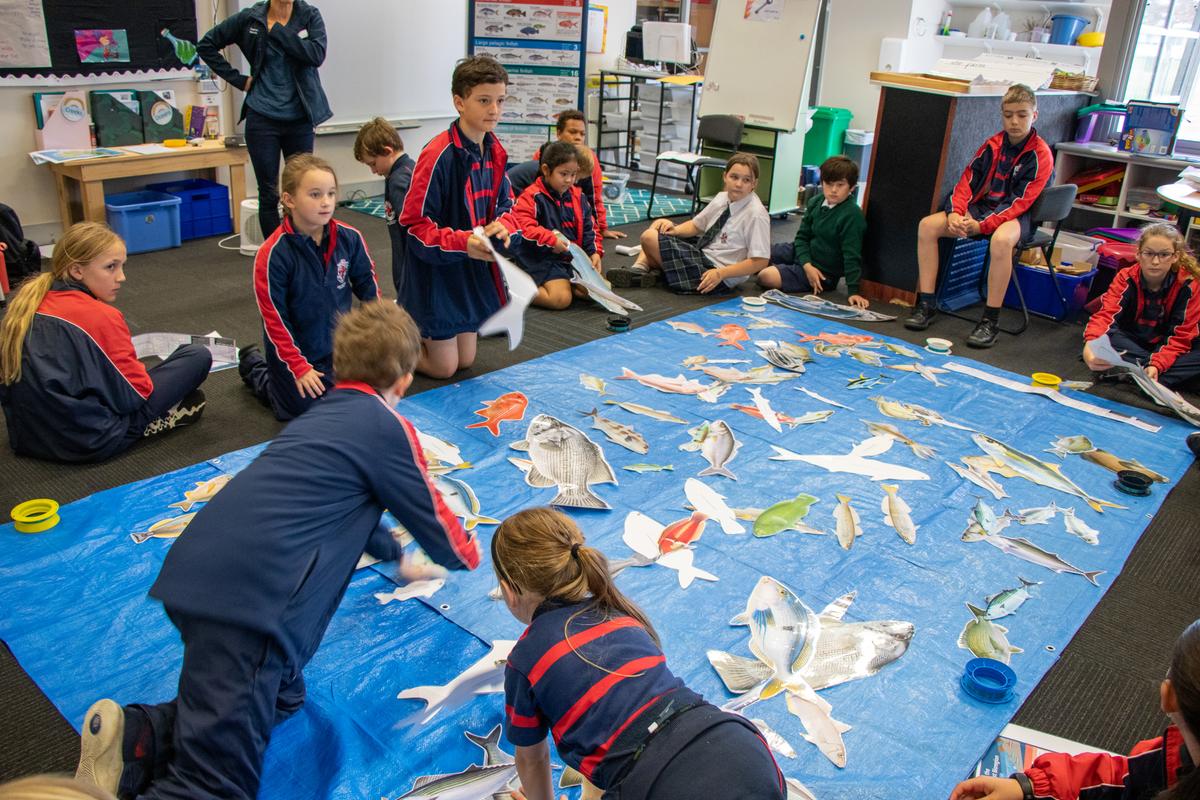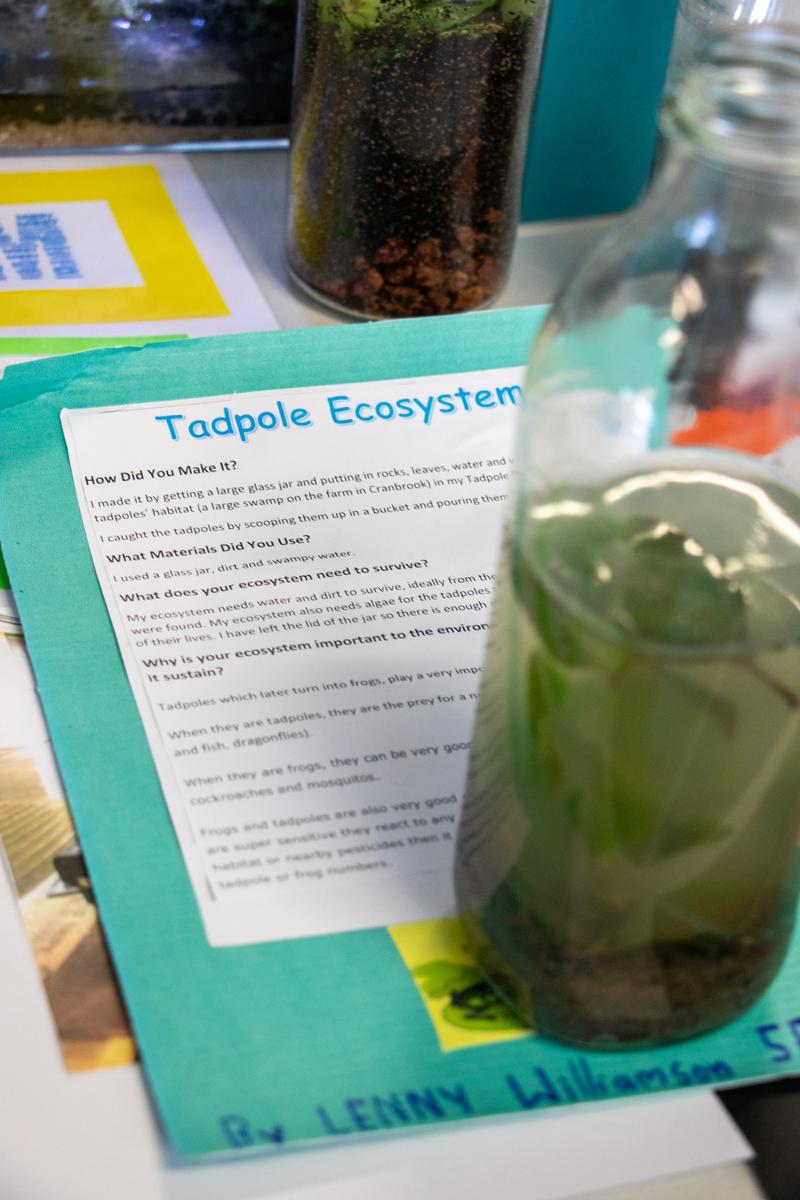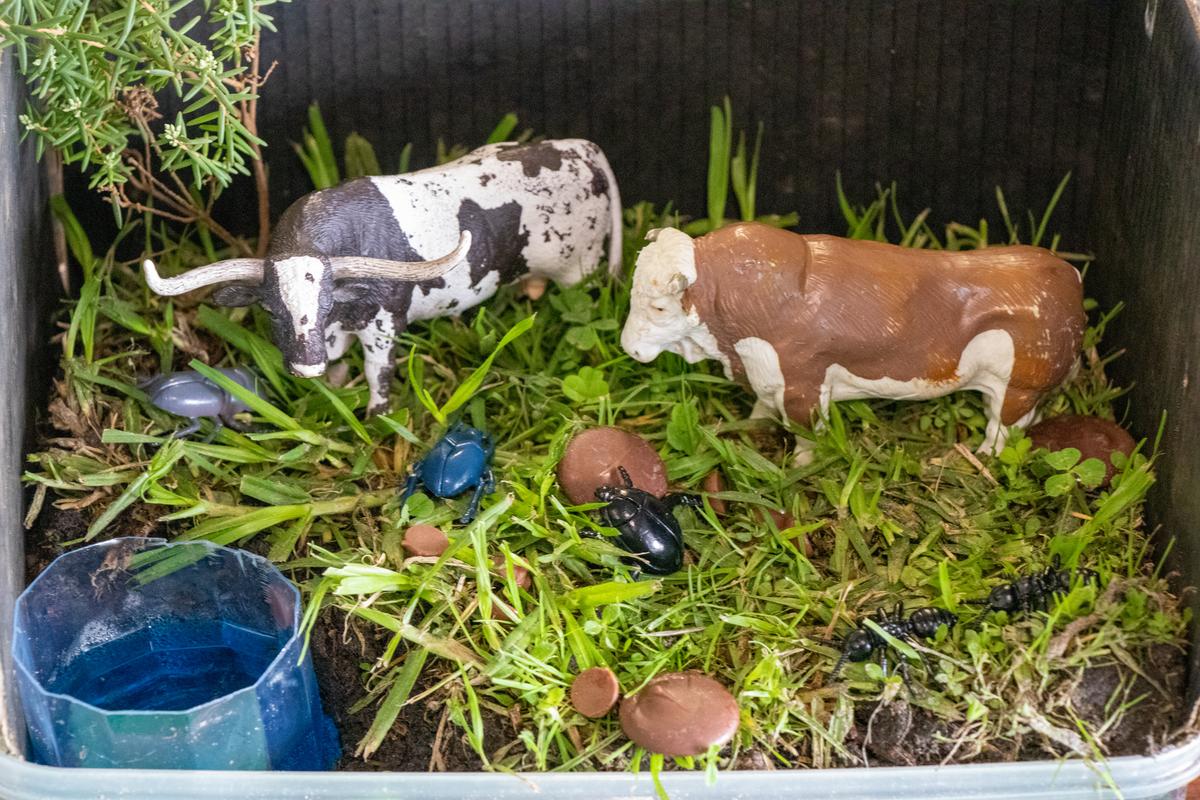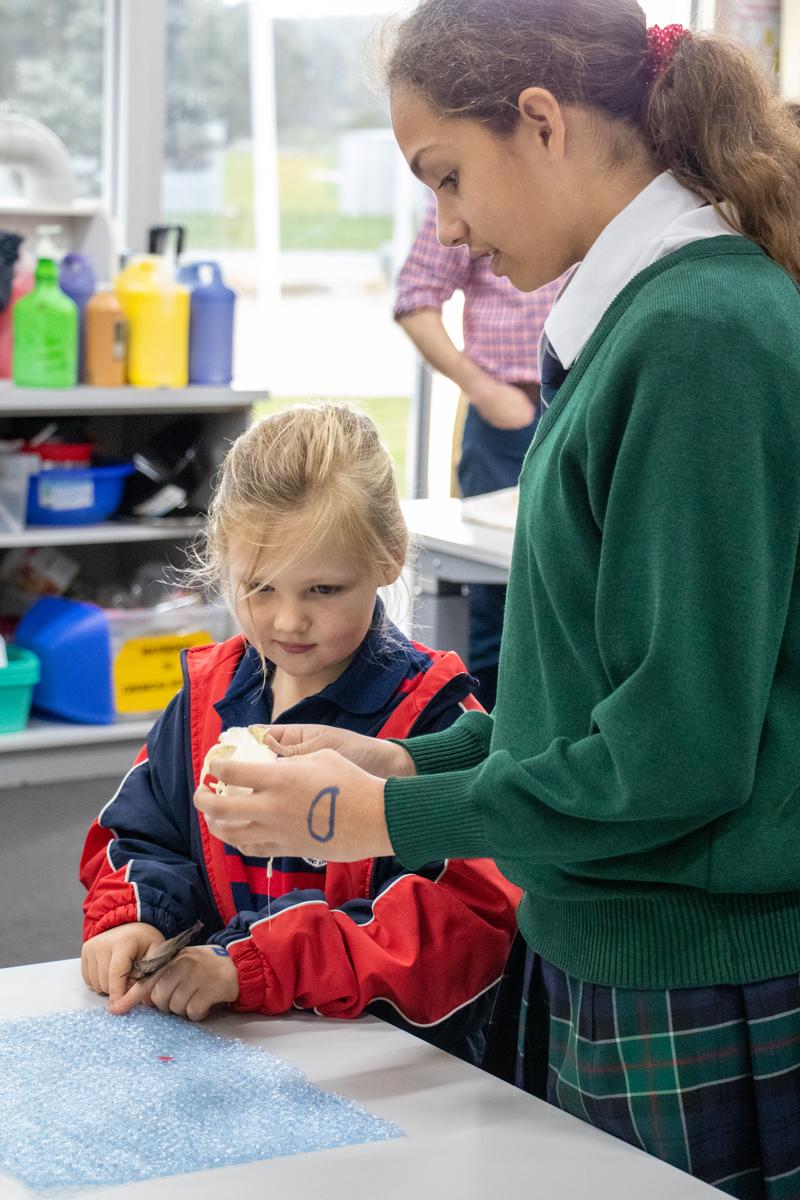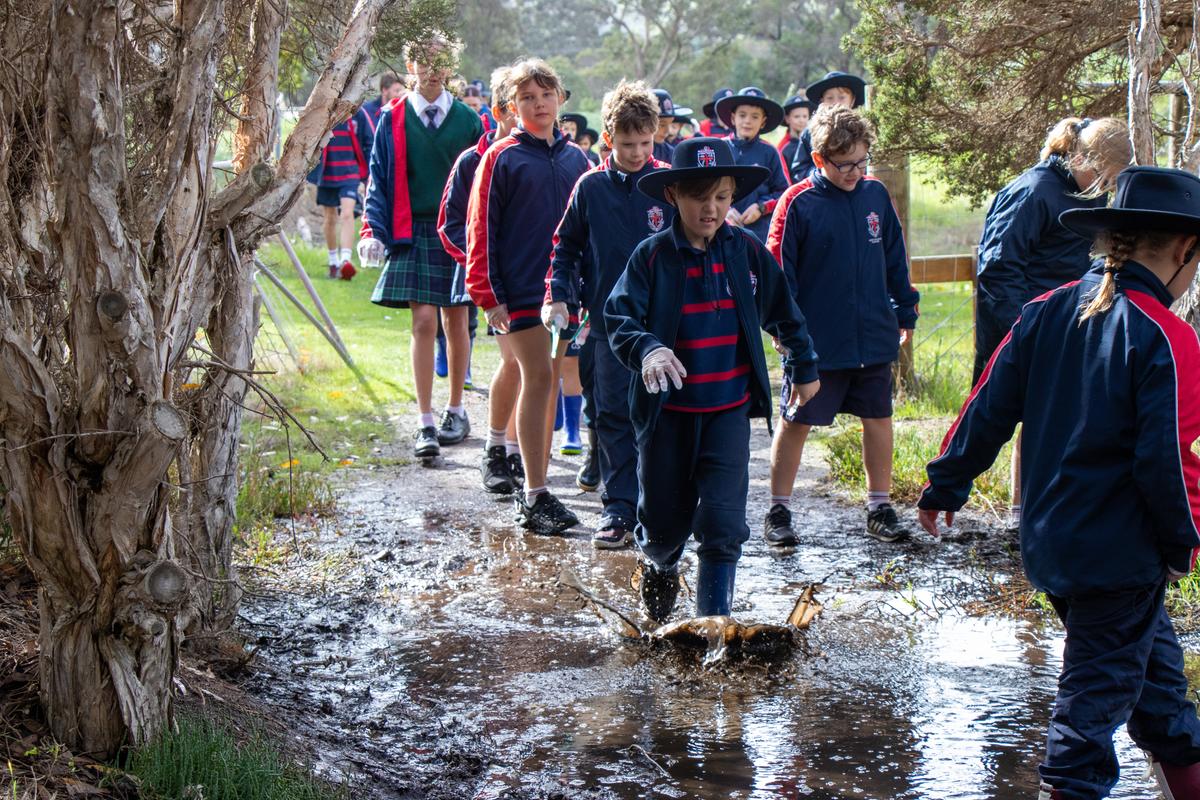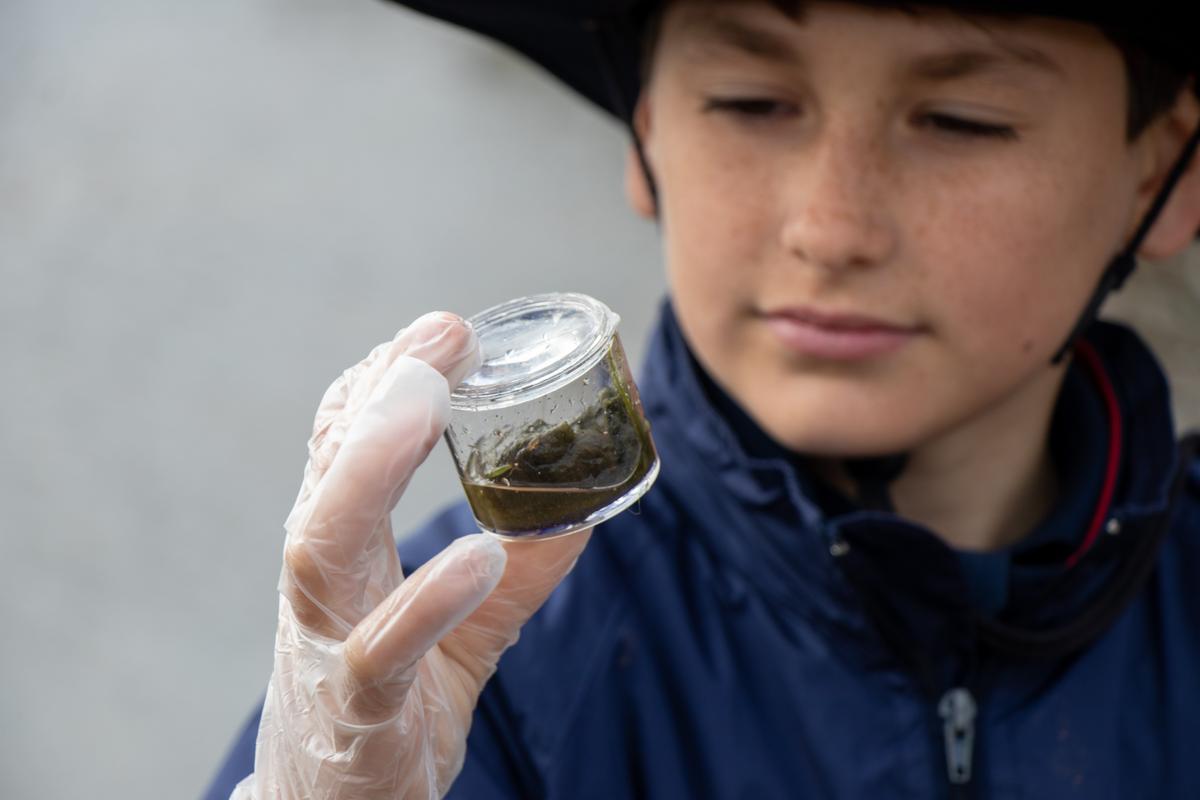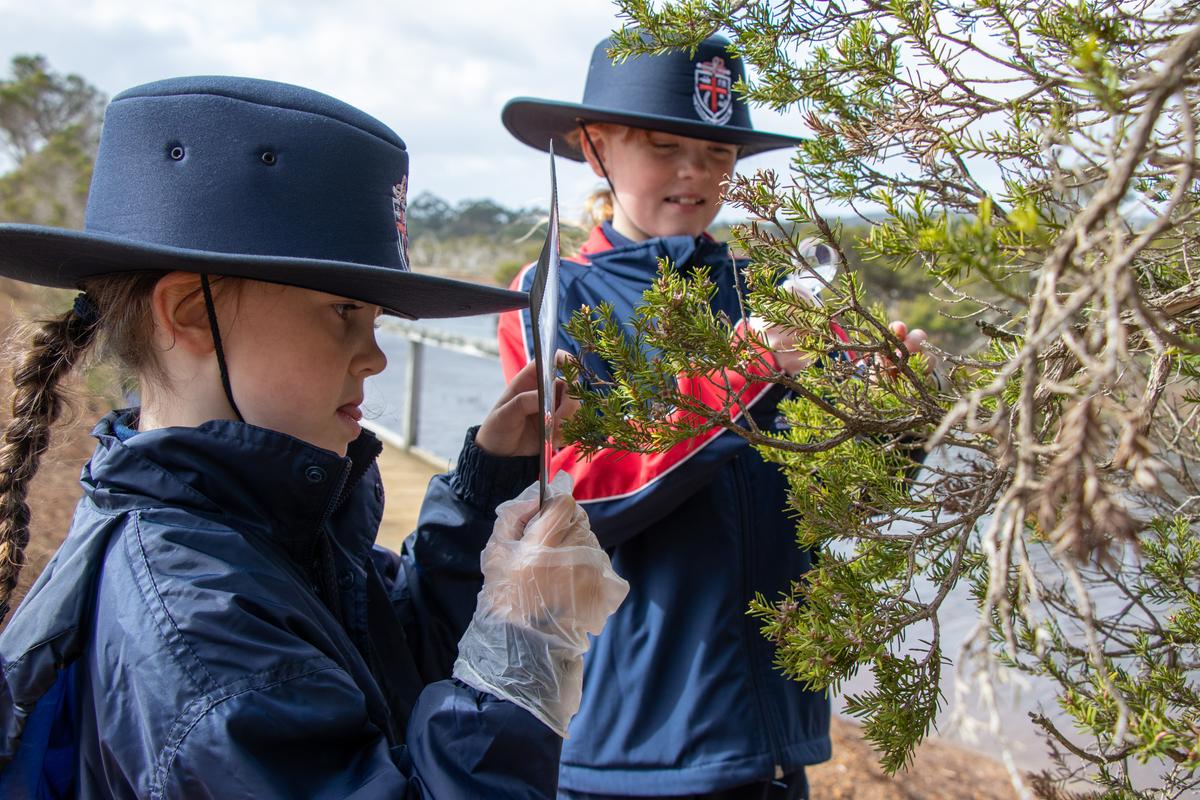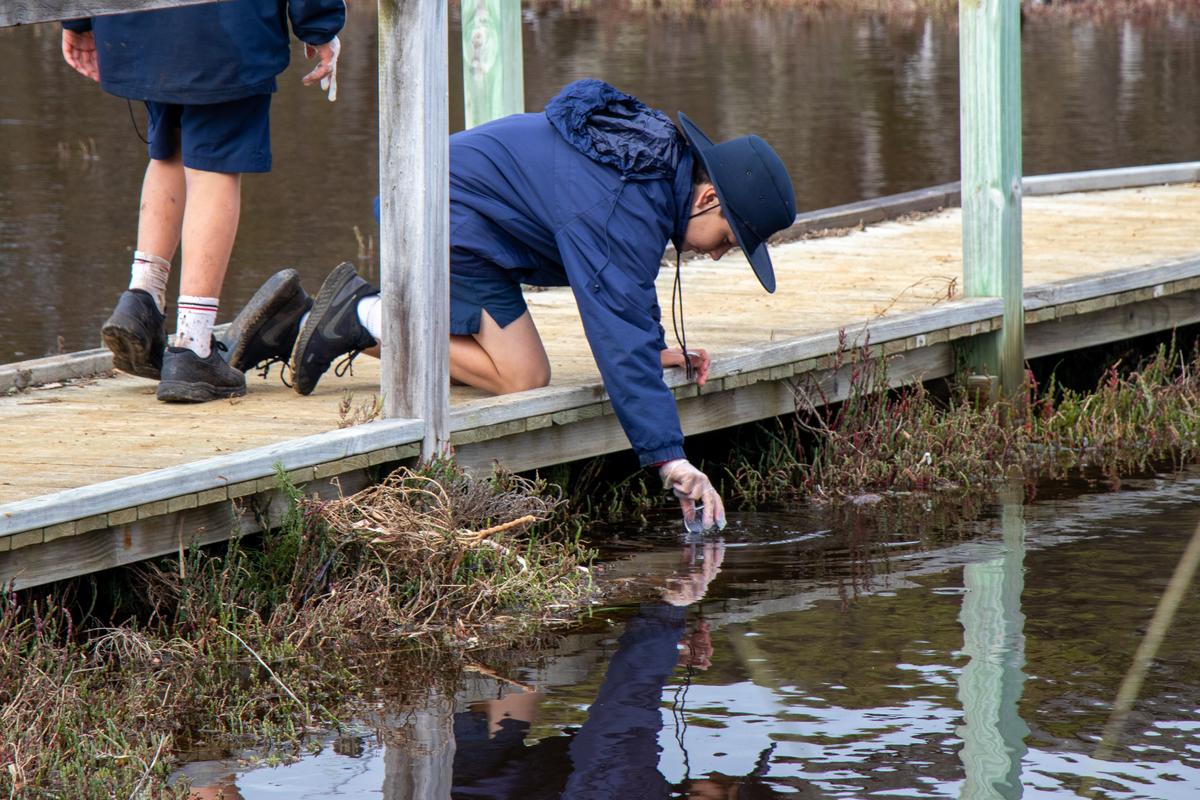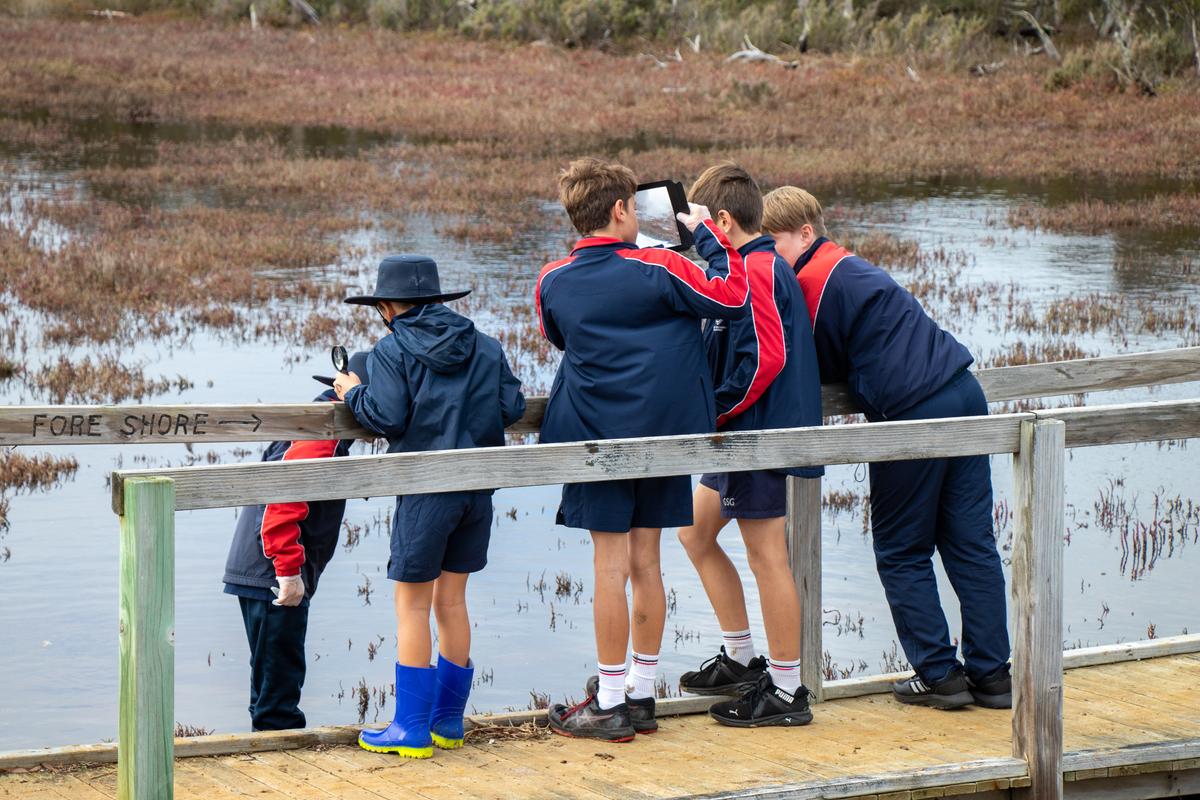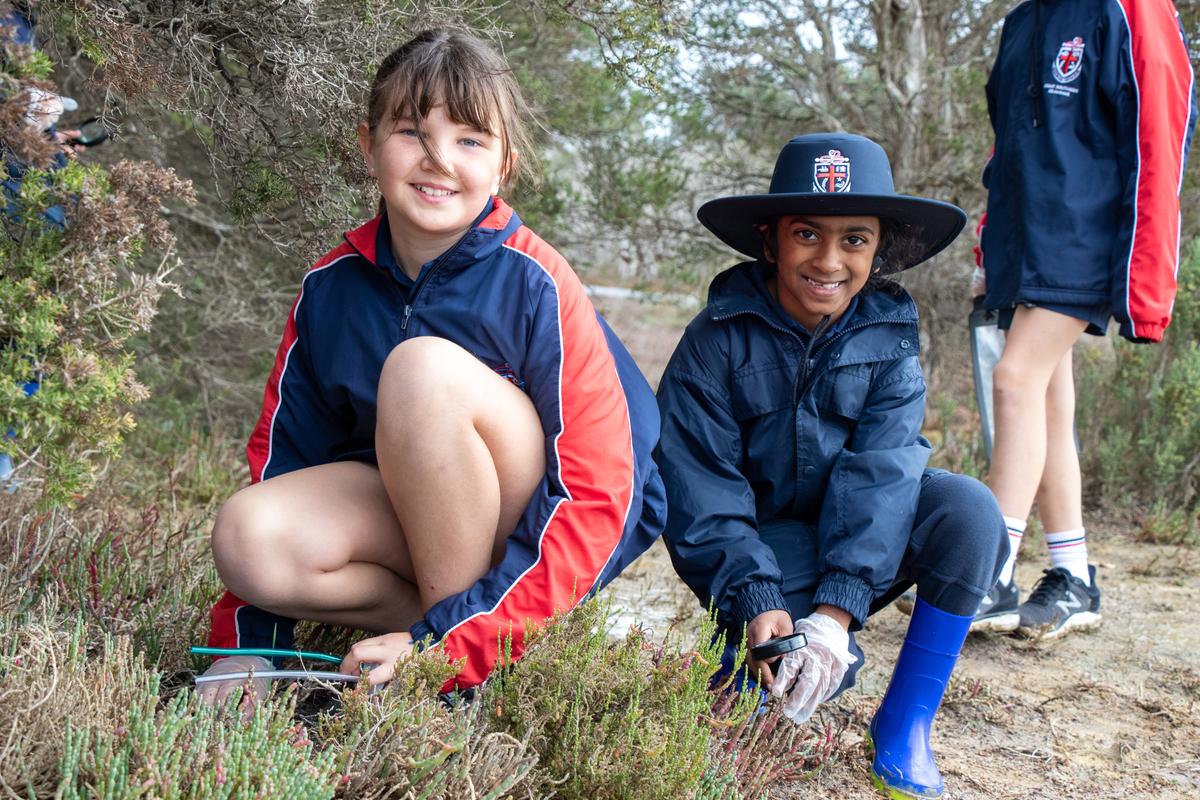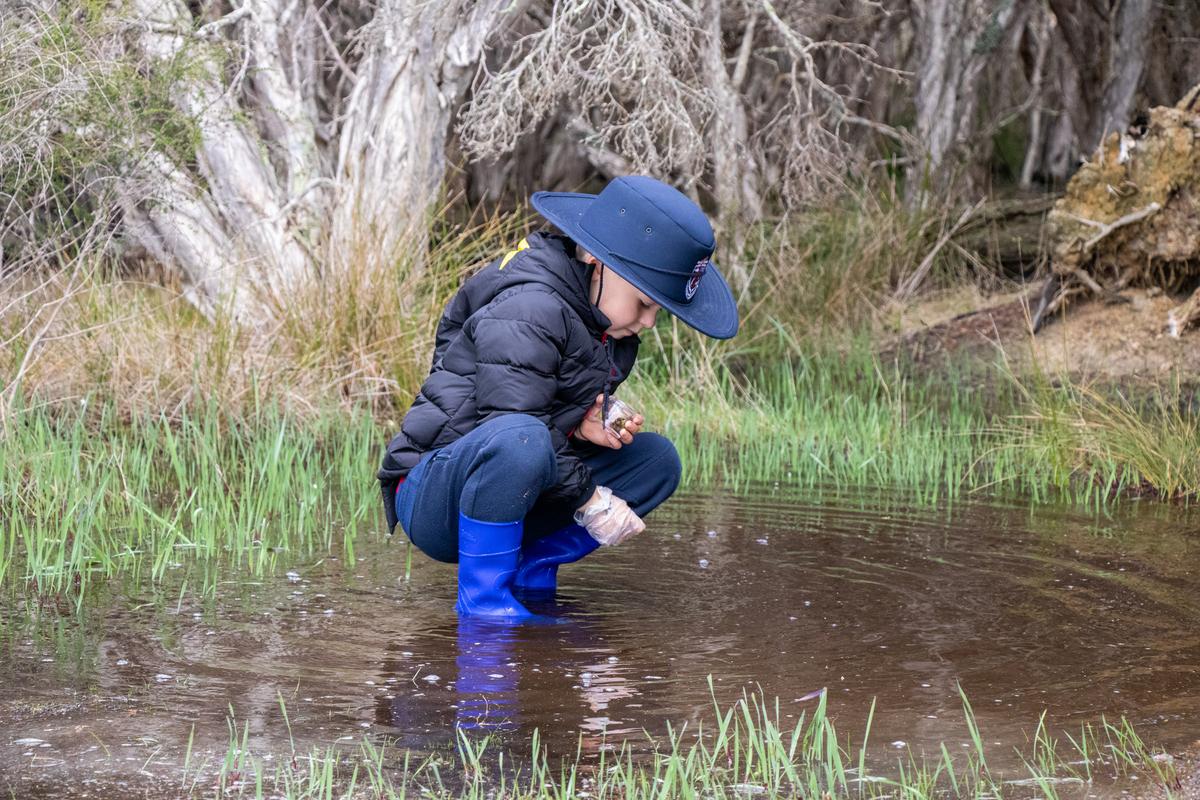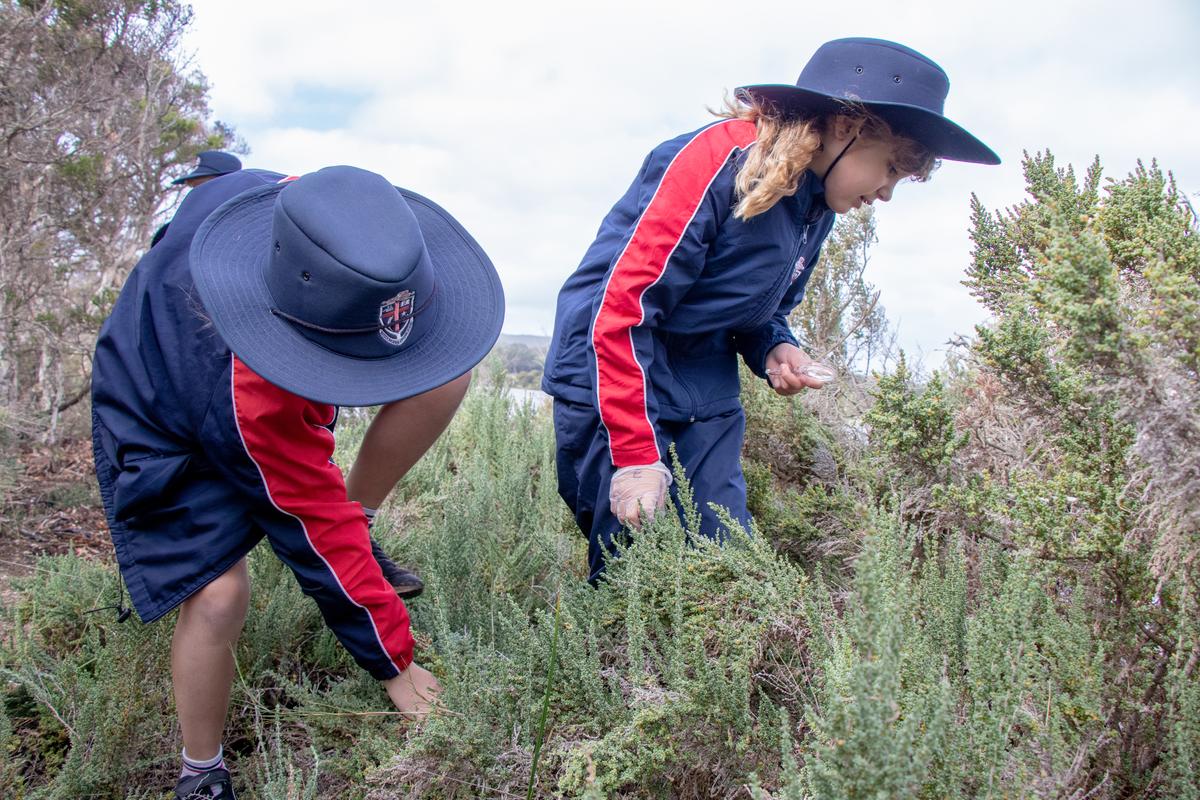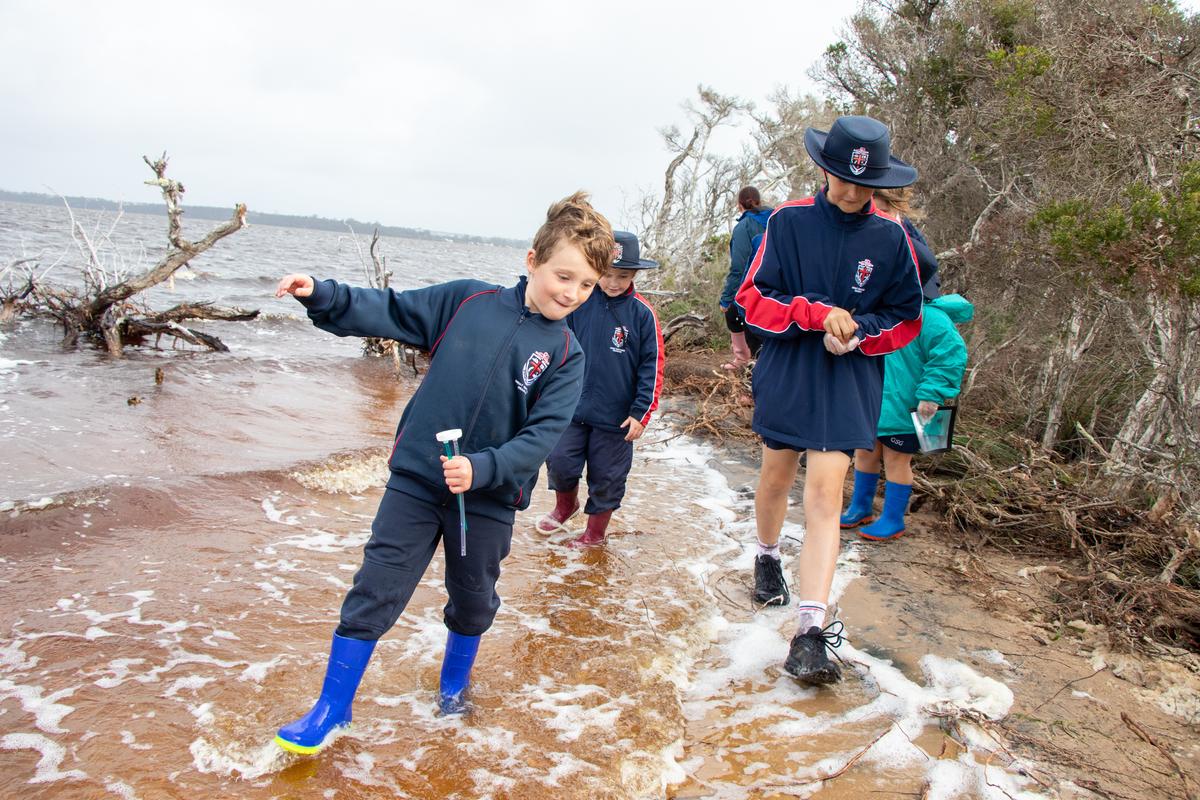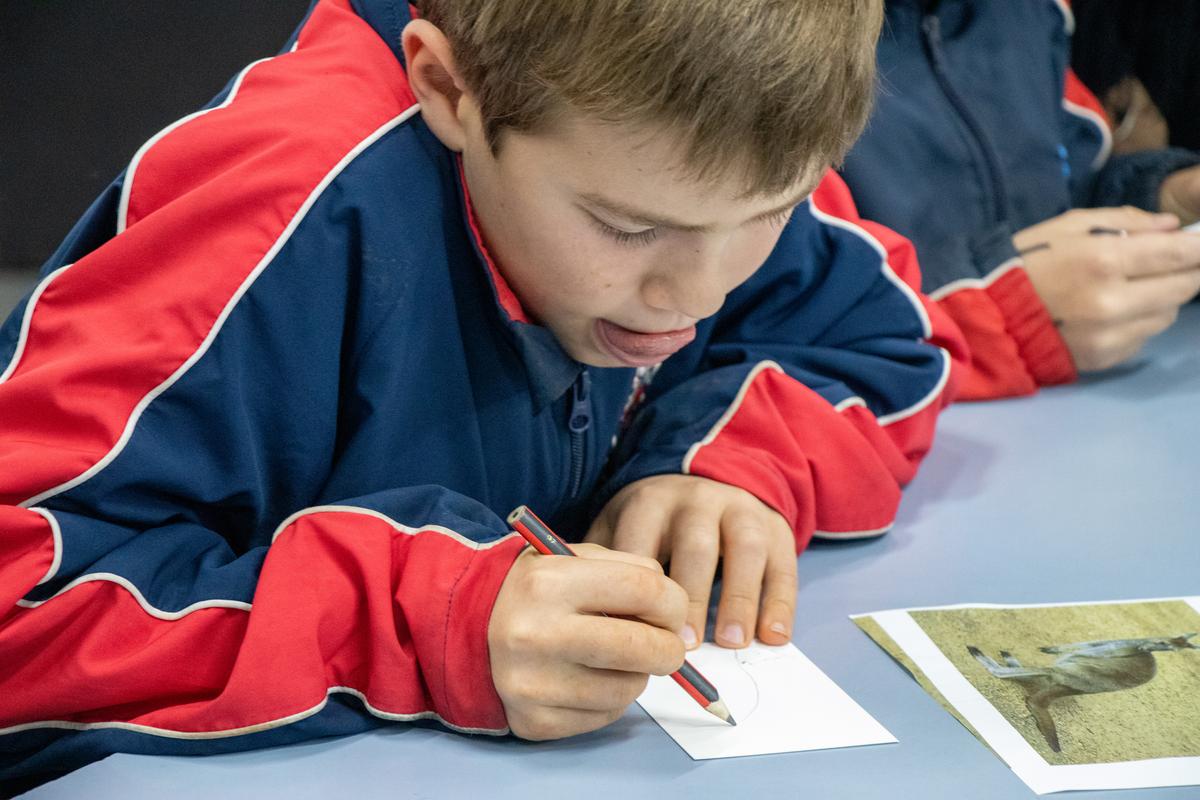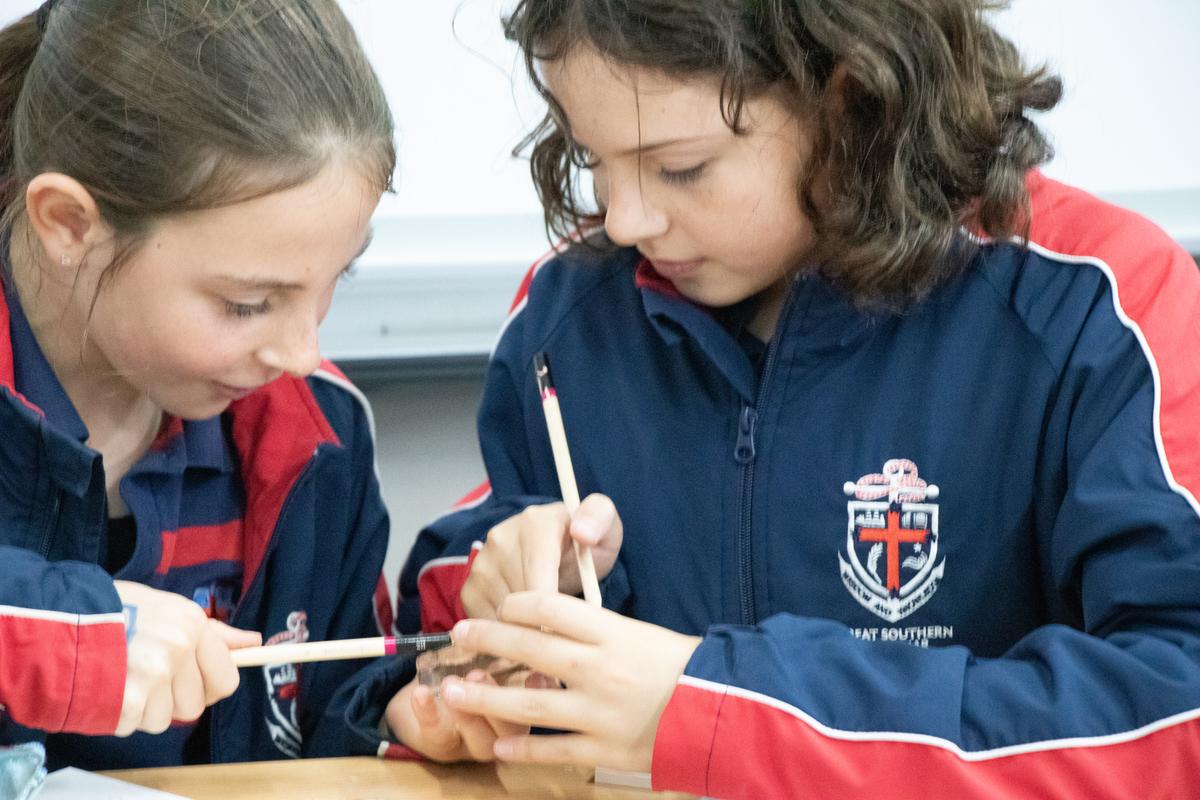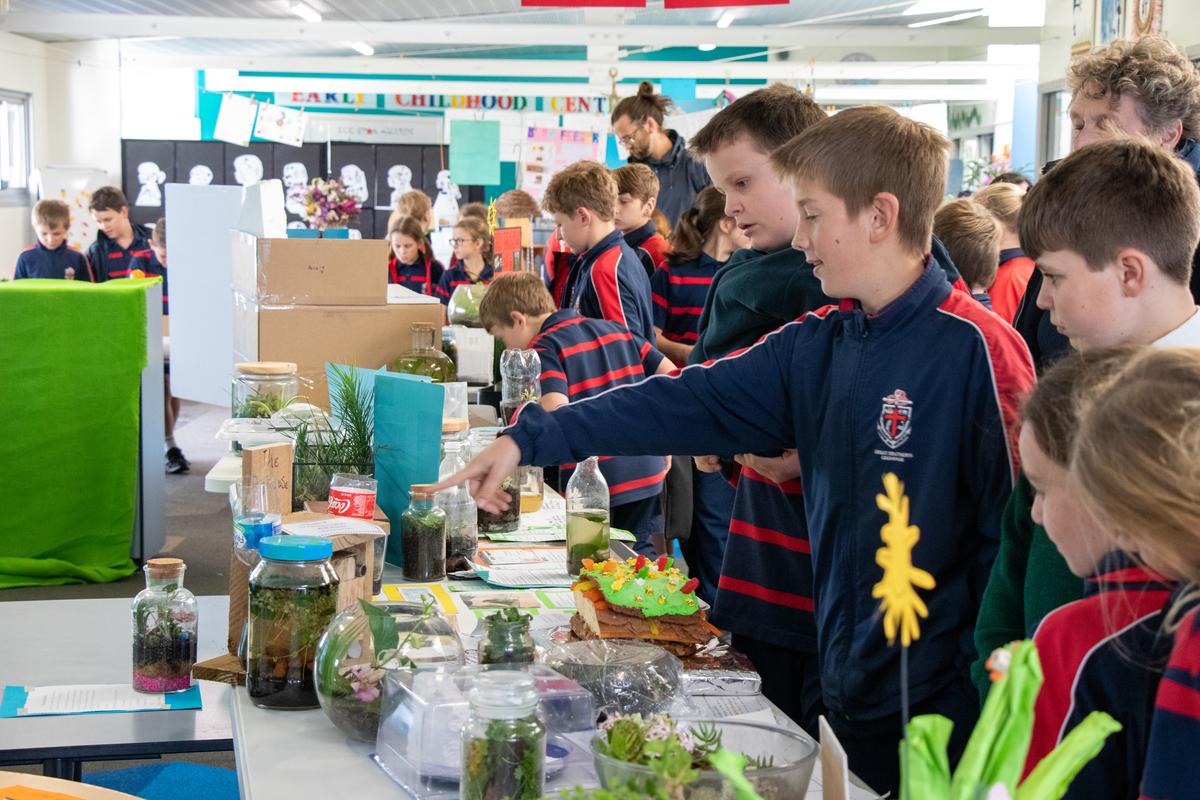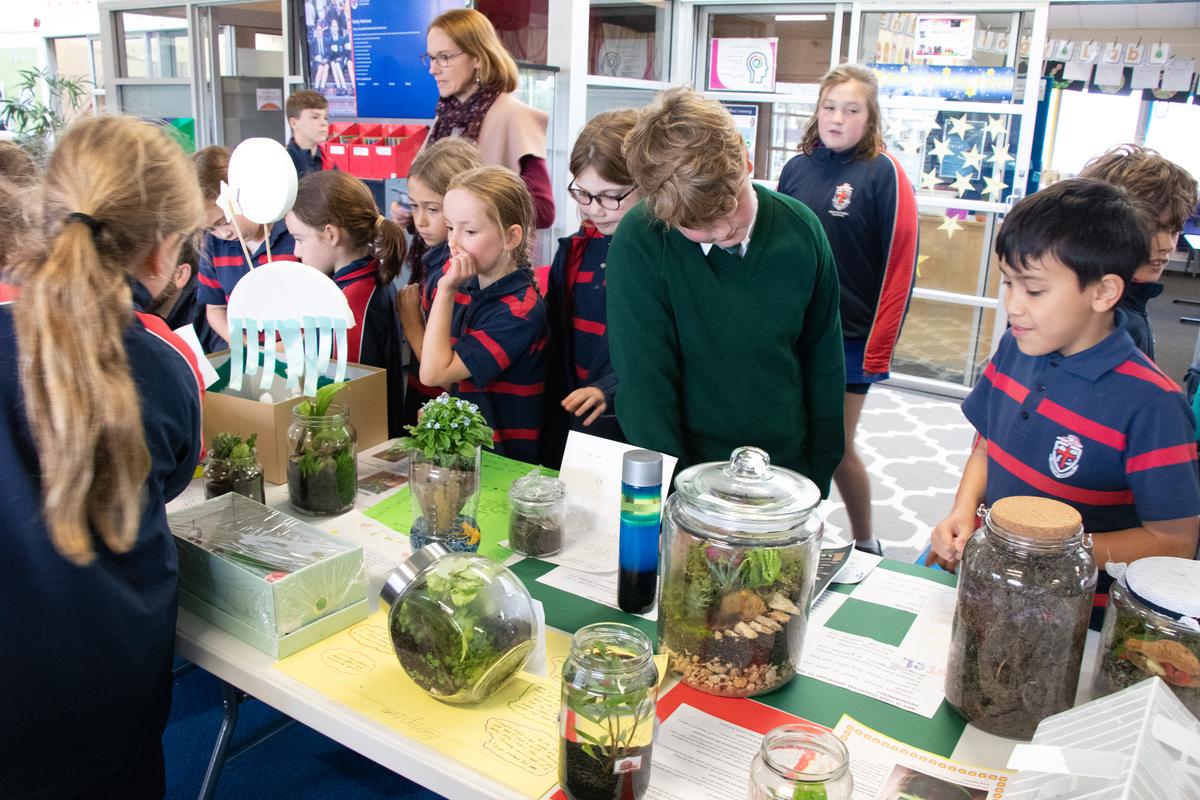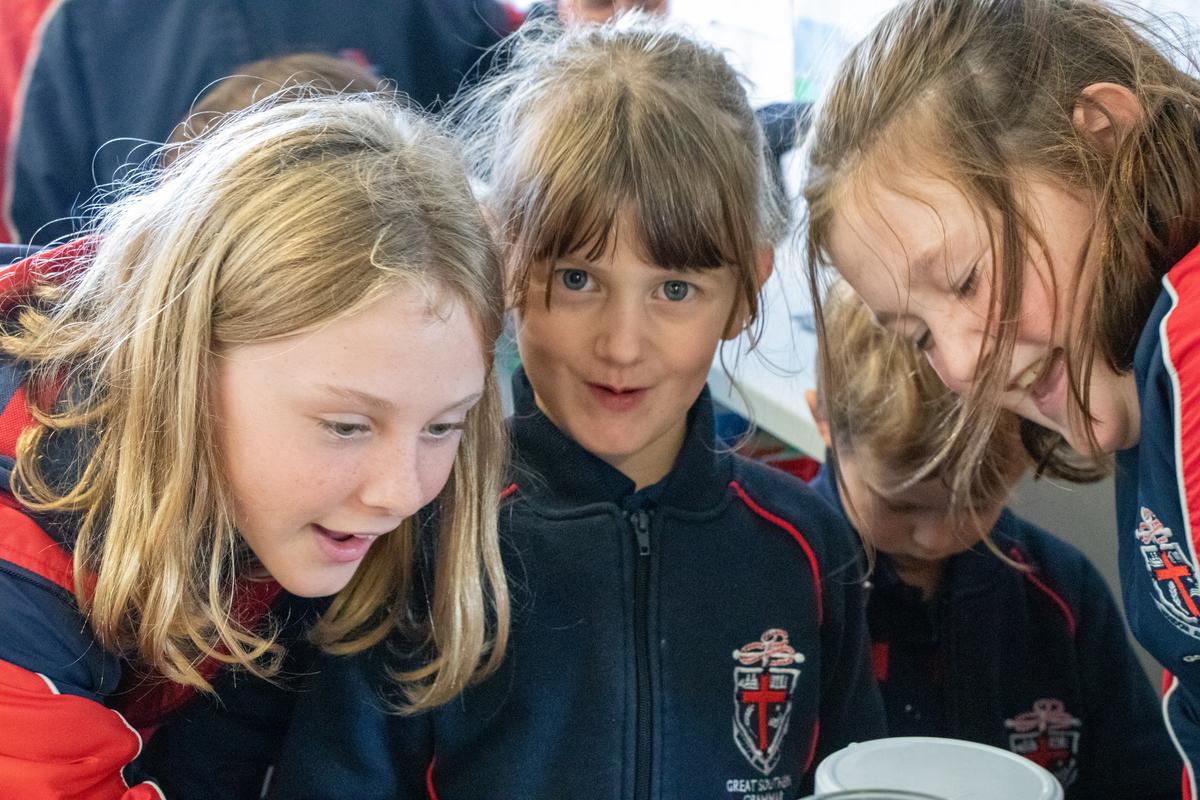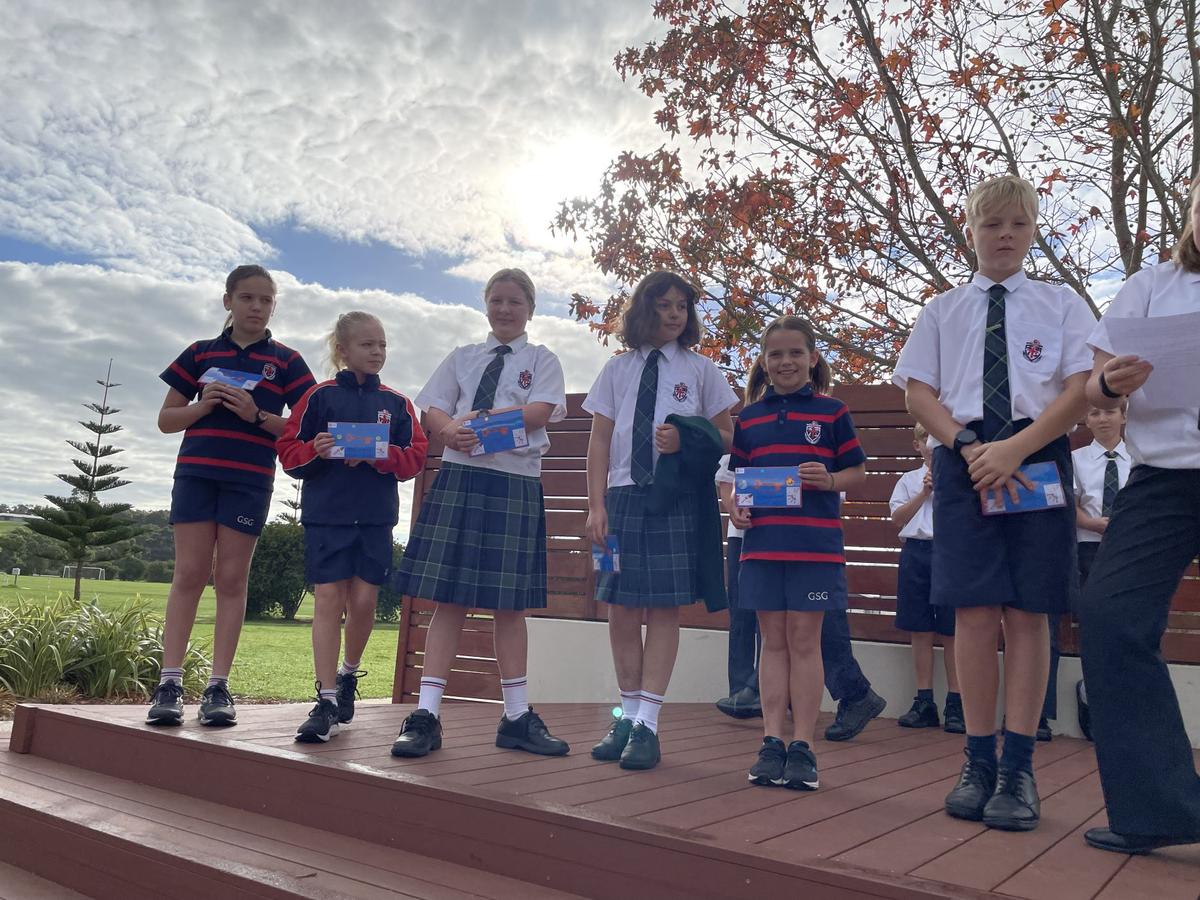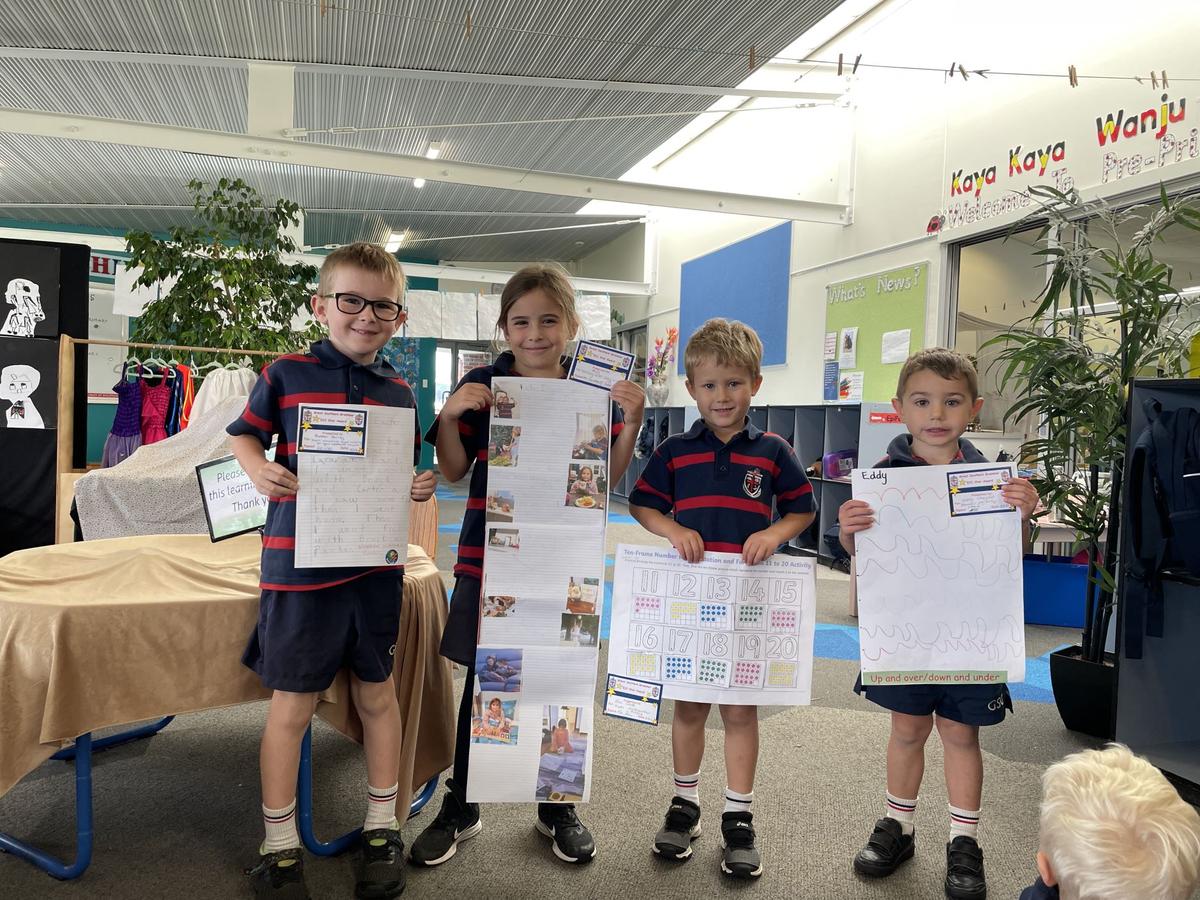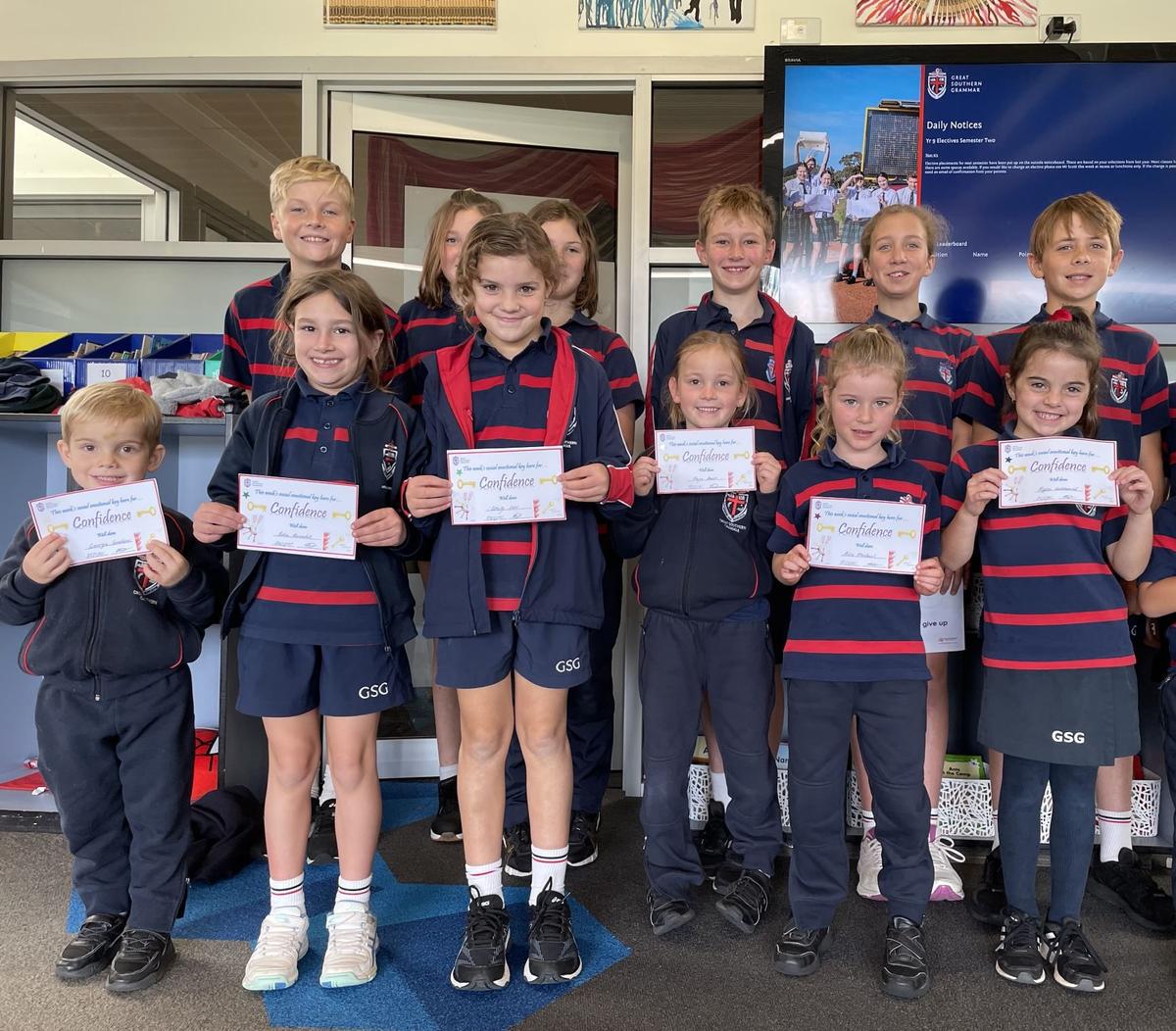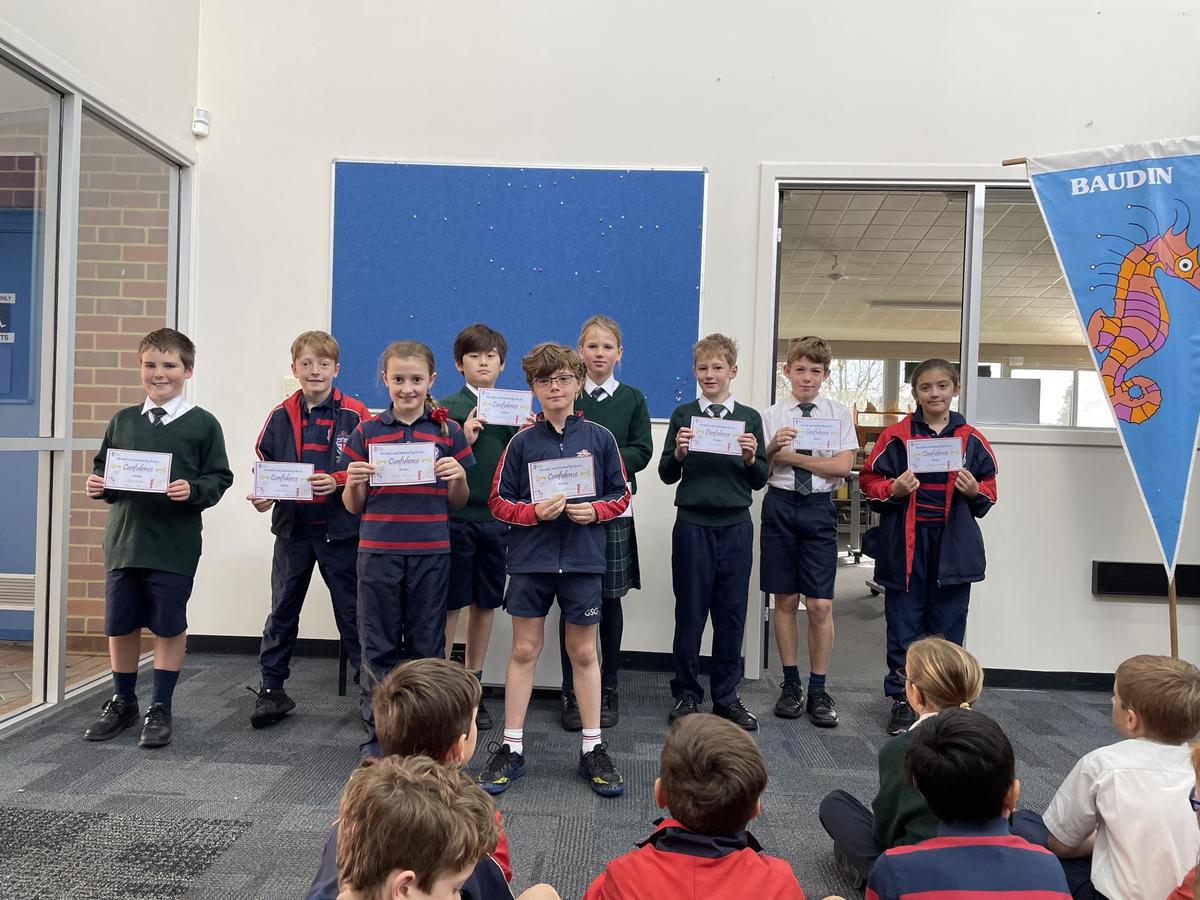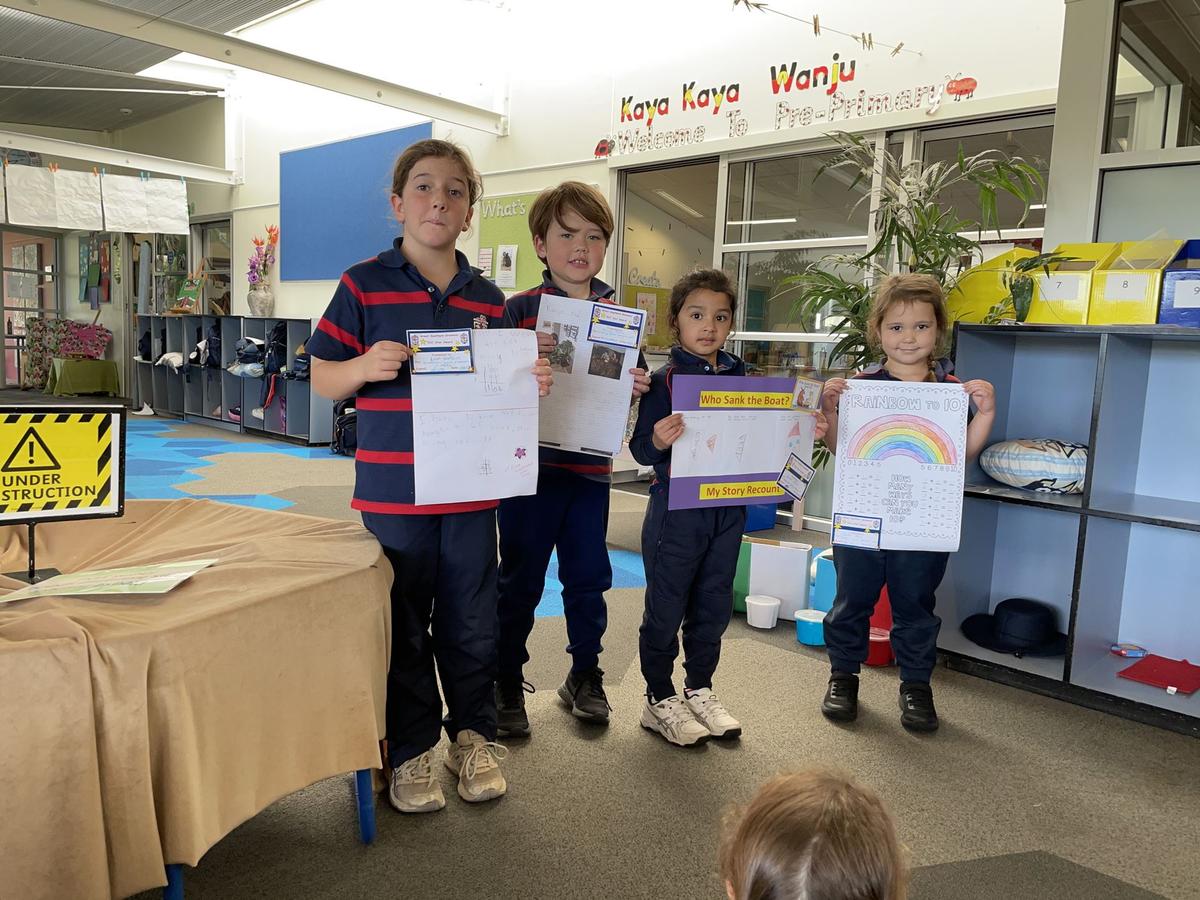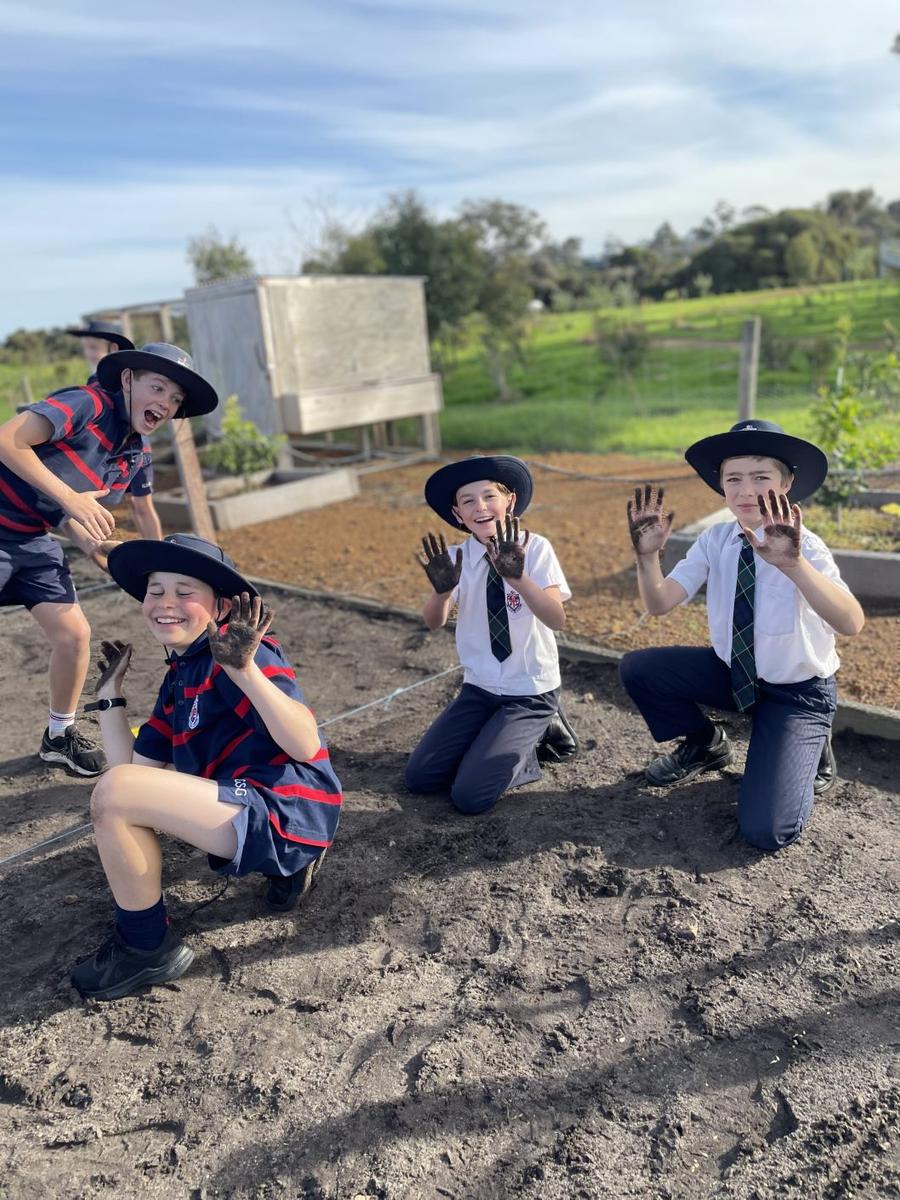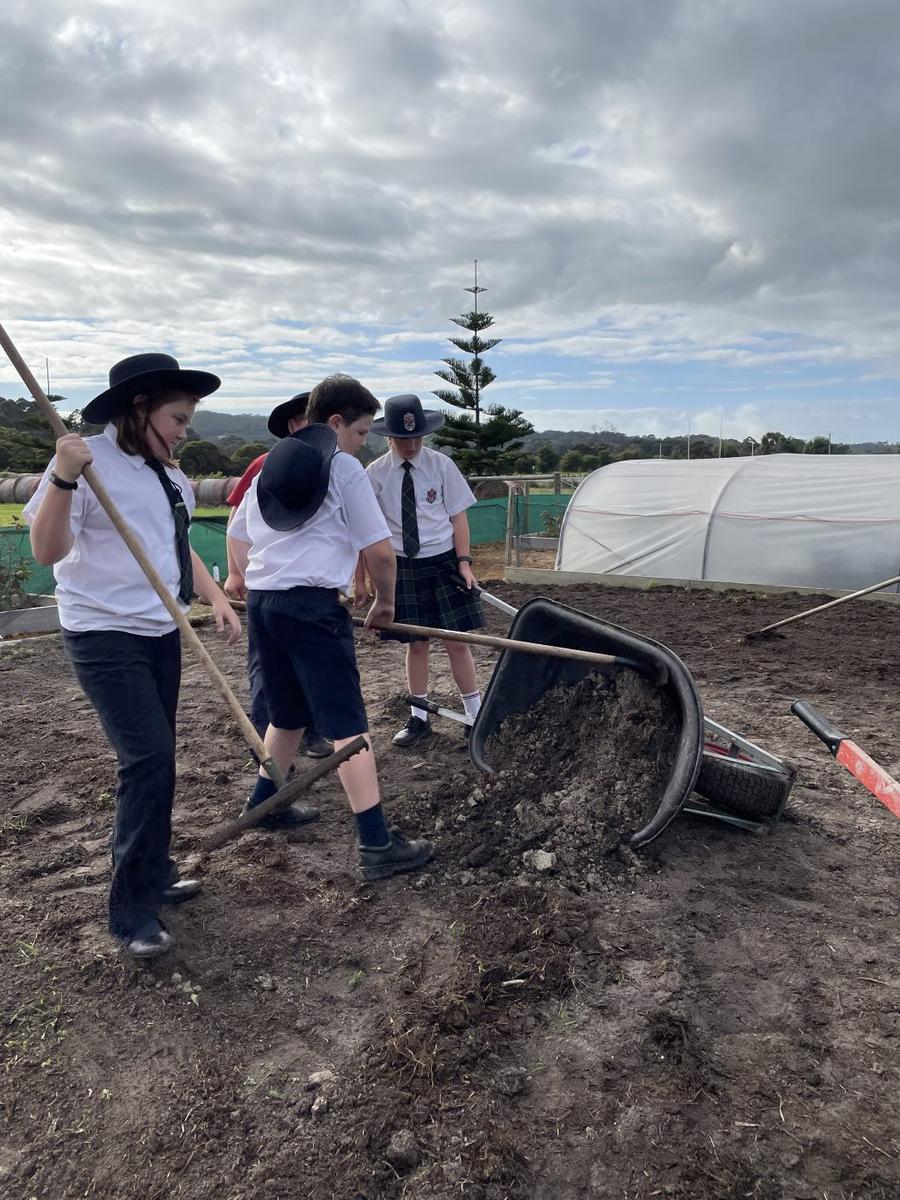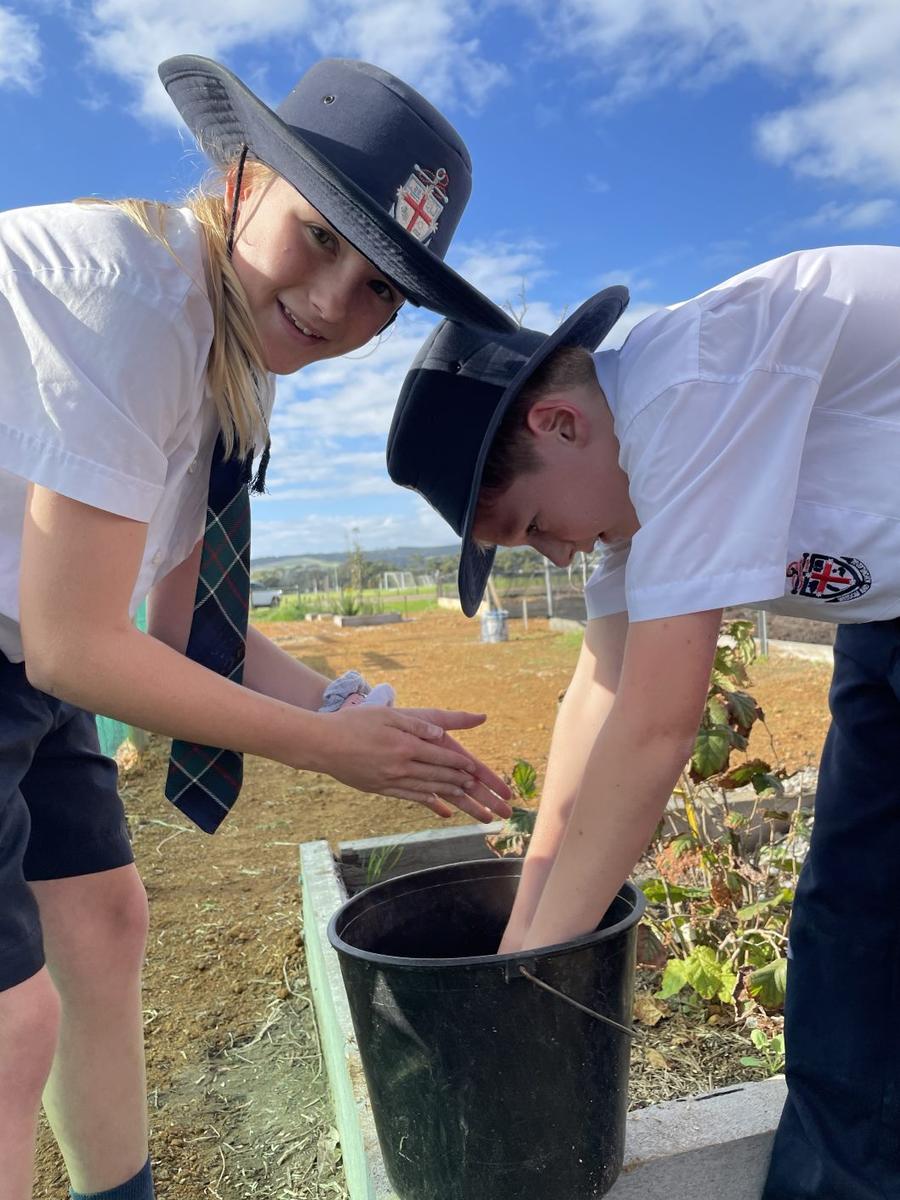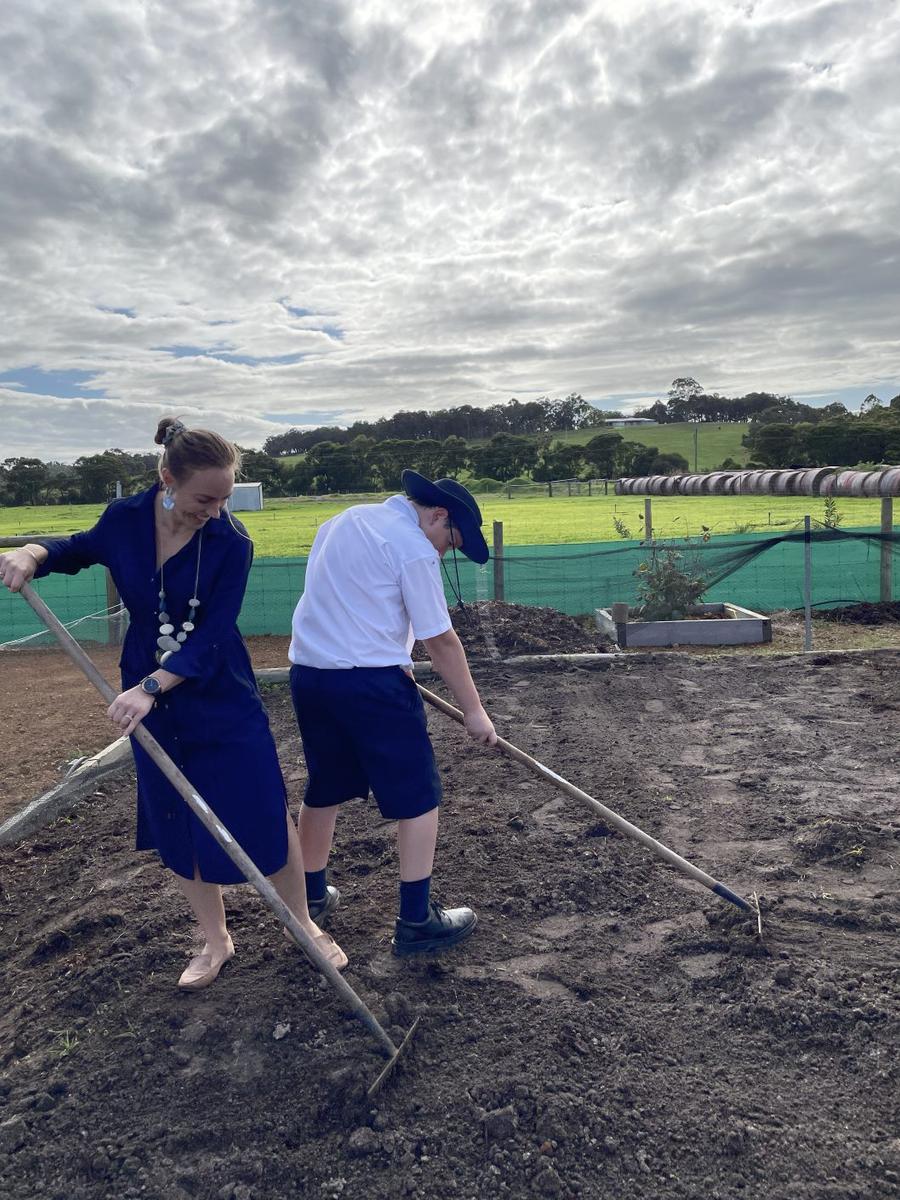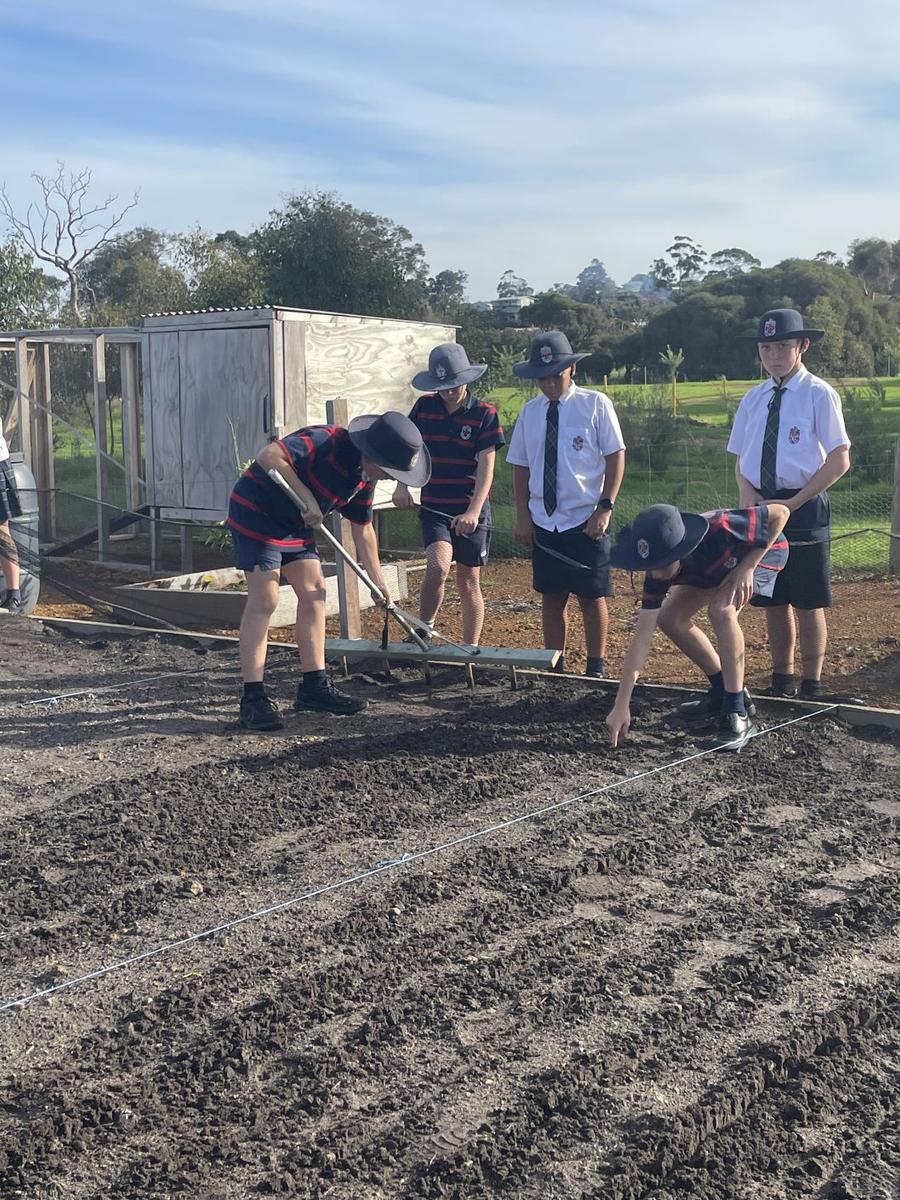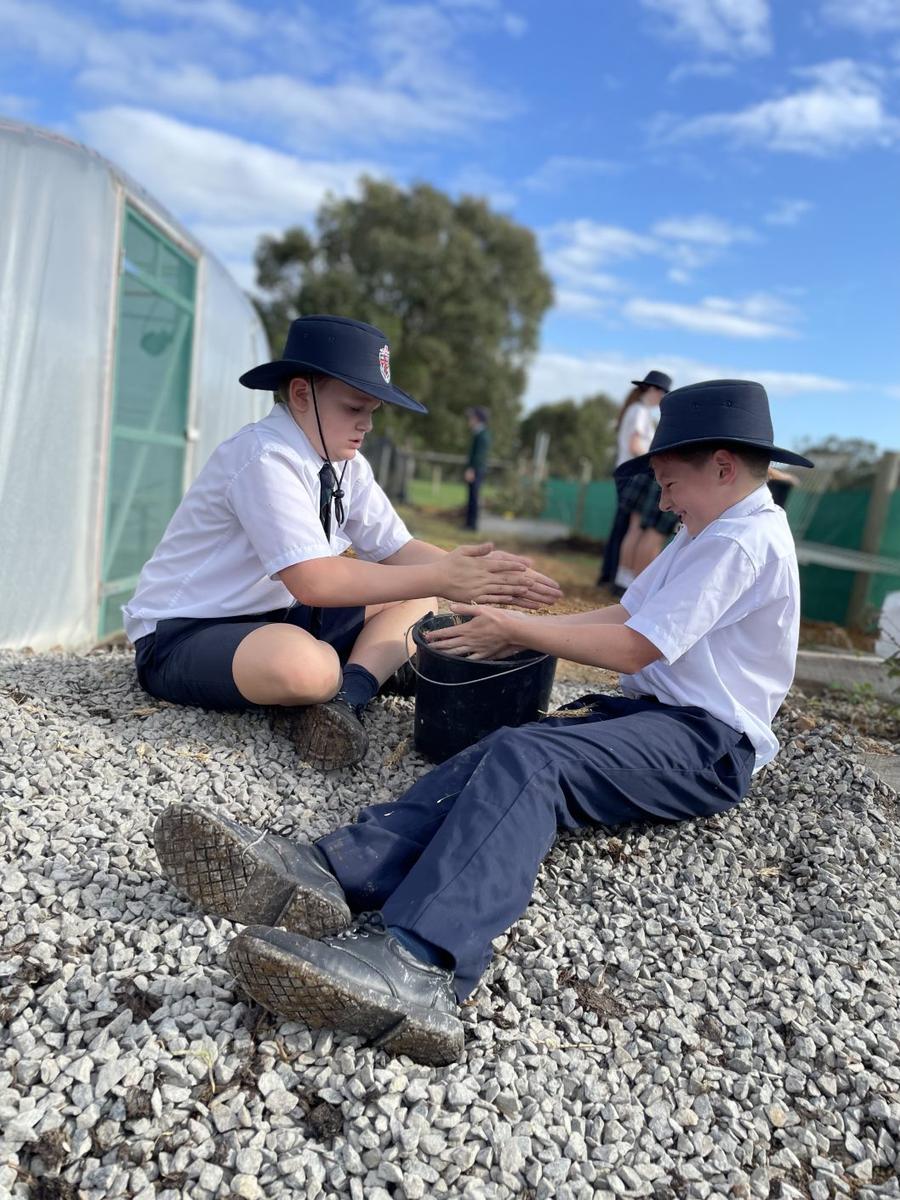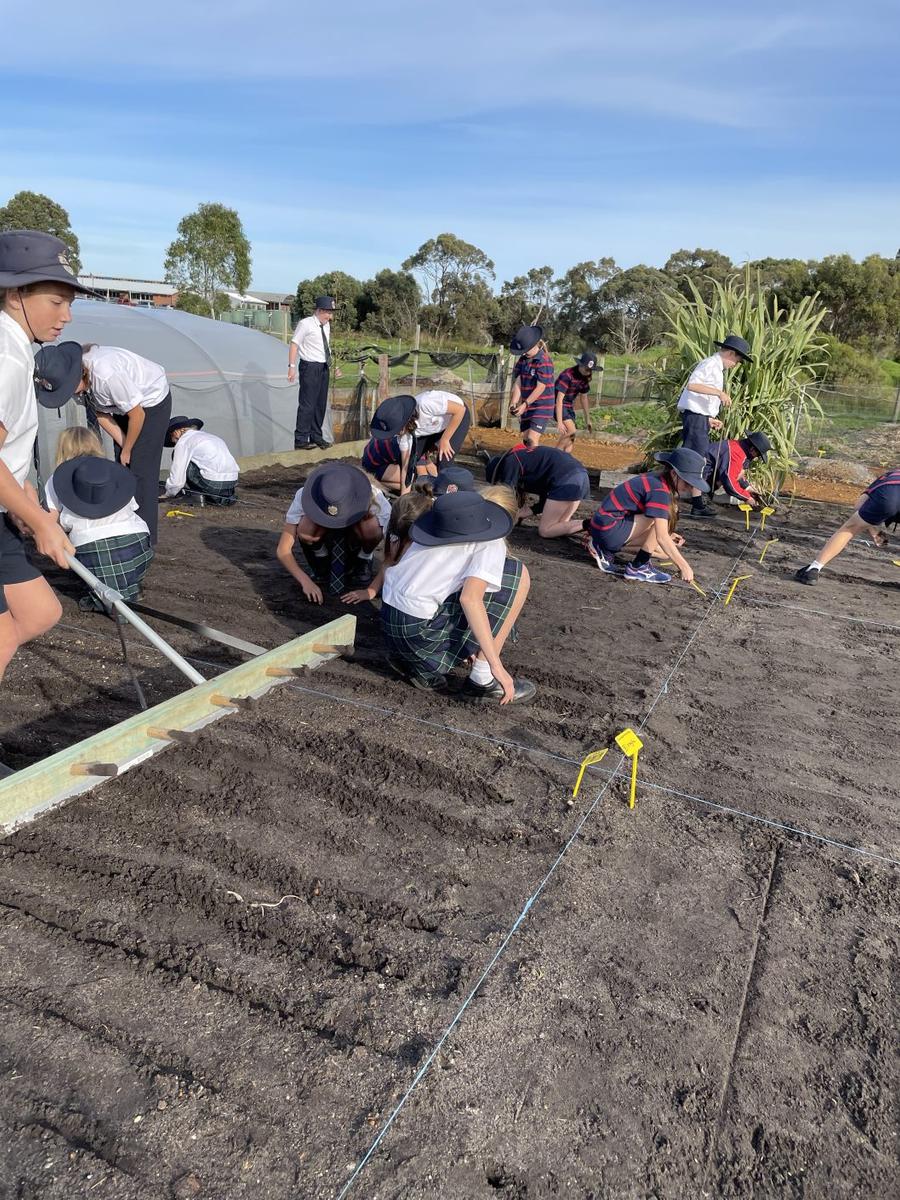Junior School
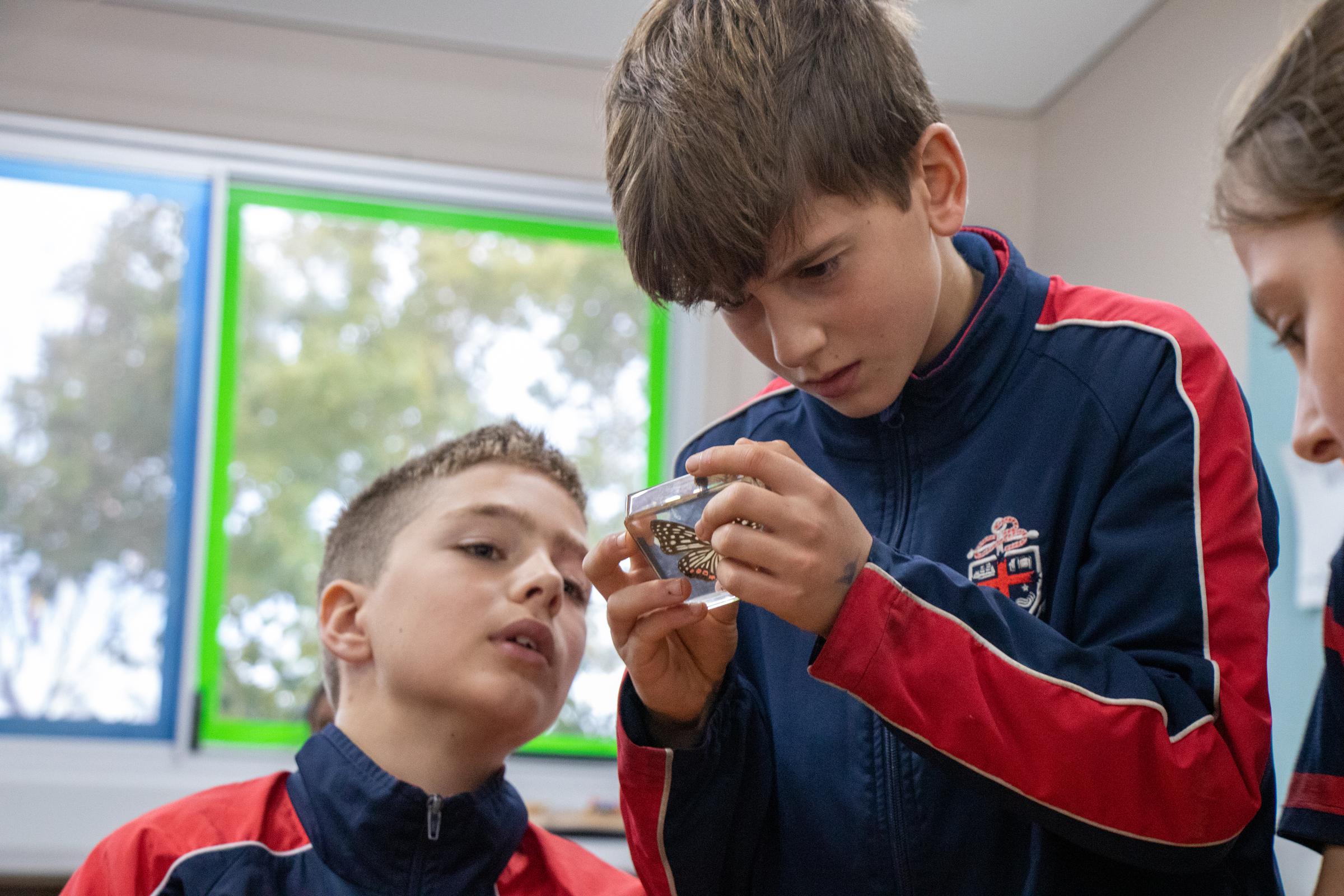
From the Head of Junior School
This week has been a celebration of Science and, in a sense, our environment through the lens of ‘biodiversity’ – this year's Science Day theme.
The Junior School explored flora, fauna and a broader understanding of how ecosystems function and the value of their sustainability. Students immersed themselves in our local ‘Wild Space’ environment, and dug deeper into the biodiversity topic with guest workshops on bones and fossils, local species of fish and how thoughtful waste disposal can reduce the impact on our ecosystems. Dr Paul Mitrovski from the Senior School Science Department opened Science Day by sharing his expertise with a presentation on natural habitats and wildlife research and Art teacher Mrs Phoebe Duff shared an artistic technique for drawing scientific illustrations of natural elements. The day was as diverse as the environment we live in. Whilst the activities and presentations were wonderful, the quiet hero of the day was ‘inquiry - being an inquirer’, one of our Junior School learner attributes.
To inquire is to ask questions, or investigate. Throughout the day, students were engaged with curiosity as they explored the resources around them. They examined and discovered, and asked thoughtful questions. Inquiry is an active learning process, the learner is constructing the experience together with the resources, whatever or wherever they might be. Inquiry meets the learner at their level and encourages them to stretch their understanding further, with interest and energy. Inquiry is empowering for students because the learner has ownership of the process and has the ability to action their findings. ‘Action’ can be acquiring knowledge, thinking differently, sharing knowledge with others, designing, making, moving, starting something, and much more.
In the Early Years of schooling, educators craft an engaging environment for our students to curiously explore with a variety of resources placed around the room and play spaces. Thoughtful questions are posed as students are interacting with the resources to build new knowledge or deepen their understanding. As students develop their inquiry skills, they contribute to the questioning process, designing research questions to explore. The educator supports students by ‘sign posting’ the inquiry process of connecting new information and experiences to prior knowledge before researching (tuning in - finding out - sorting out), providing feedback and encouraging students to explore further (going further), before analysing their information and forming conclusions to present or action (drawing conclusions – action). This inquiry process shares many similarities with Design Thinking and Scientific investigation; there are subtle differences depending on the context but familiar mechanisms underpin the inquirer attribute. Equipping students with inquirer mindsets and processes helps them to navigate unfamiliar contexts as they grow. As adults we still encounter unfamiliar scenarios, and draw upon our prior knowledge to assist us categorise this new information before we explore further. The inquirer skills we establish in Junior School offer a wonderful foundation for life long learning.
Science Day was a tremendous experience. The learning around biodiversity was incredibly valuable and it clearly sparked a common interest in our students across all age groups. I’d like to extend my sincere thanks to every family for supporting the home learning aspect of building either a bird feeder or model ecosystem. The display from Pre-Primary to Year Six in the Early Childhood Centre was stunning, it was such a delight to see students and parents alike admiring the builds and complementing each others efforts.
Thank you to all of our presenters and workshop facilitators – Dr Mitrovski, Mrs Duff, Ms Kylie Outhwaite - Community Education Officer at the Department of Primary Industries and Regional Development, Mr Scott Neil - Learning Engagement Officer at Museum of the Great Southern, Mr Brad Waldren - Education Officer at Cleanaway, and all our teaching and support staff for facilitating activities and of course Mrs Fiona Gouldthorp – Year One teacher and Junior School Science Coordinator for designing such a superb learning experience for our students.
With warm regards,
Mr Ken Raven | Head of Junior School
Student Reflection - Science Day
On Monday 31 May, the Junior School had a thrilling day of science. The event was aimed at enticing students into the world of science and exploring scientific ideas with a variety of ideas and activities, many relating to biodiversity.
In a lead up activity to the day, students were tasked with the job of a homework project to create birdfeeders (Kindergarten to Year Two) and mini-ecosystem terrariums (Years Three to Six). On the day, students checked out everyone’s projects and were impressed by the range and standard.
The first activity had students all gathered to learn from Dr Paul Mitrovski. He explained how we could catch animals without injuring them and told everyone how to identify the species of the animals.
After this, students split up to take part in the activities with their assigned groups. Everyone was split into six groups to participate in the following activities: Fishing, garbage, fossils, a Wild Space trek and botanical art.
Our first biodiversity adventure was from Scott from the museum teaching us about different features of the animal’s skull, to determine whether the skull belonged to a carnivorous or herbivorous animal. He also compared a mako shark jaw to a great white’s jaw and then to their ancestors jaw the megalodon. All the students loved Scott’s display of the skulls and fossils of animals. This was a great learning experience, and the knowledge will help us in years to come.
In the garbage activity, Brad from Cleanaway, talked to students about recycling and its importance. Brad explained the different types of bins and what to put in them. These bins consisted of: garbage, recycling, FOGO and REDcycle. Garbage bins are for items that cannot be recycled; recycling was items that could be recycled; FOGO bins are made for garden and food scraps; red cycle bins are for soft plastics. Students contributed in an activity to sort out garbage into the correct bin. Brad also talked to everyone about a garbage dump in Albany and how many domestic animals had drifted away from their homes to inspect our rubbish for food. Brad helped all students to understand the significance of trash and how it impacts our world and biodiversity on earth.
The Year Two classroom hosted Kylie from the Fisheries Department who had a range of paper fish in their true sizes laid out on blue material acting as the ocean. All the students then paired up and took a piece of fishing line with a magnet attached to the end of it. The fish also had a magnet as well as the fishing line which created a very entertaining game where we caught the fish with the fishing line. Then we learnt about the bag limit which is how many fish you can take per species, and what size the fish must be to make it legal to take home. The students had an amazing time, and many people were getting involved and loved the fun and intriguing game.
Despite the cold and sometimes wet weather, all the students had the opportunity during the day to get geared up in beanies, ‘wellies’ and raincoats and embark on a journey into the wild weather heading down to the Wild Space (which is a shore connected to our school). All the children were handed a magnifying glass and a little jar to put whatever they found out on the shoreline. Once the students all got down there, they hiked through the muddy and wet sand. The Year Fives and Sixes buddied up with a younger student to spend our time down at the Wild Space with. We all got to experience each little nook down there. Whilst looking for interesting souvenirs to take back to their classrooms they looked at the wonderful view showcasing all the different biodiversity there was in our beautiful wild space and at our school.
In the afternoon, students had to recreate a botanical art of organisms. Everyone had to reconstruct a photo of choice. Some students recreated plants, flowers, animals and insects. Students were split by years into their groups and sent into different rooms so that the area would not be crowded. Mrs Duff drew some extraordinary pictures as diagrams for all the groups to look at too see how much detail was needed. Everyone was handed a small white rectangle of white paper and then also a black sheet of card that was only a touch bigger. Students started to draw with only a time of 15 to 30 minutes. The art the students made was showcased on blue and green fabric in the ECC foyer. With the pictures mounted on the walls and tables it looked like a display of biodiverse animals, insects, and plant organisms.
The students of GSG thank all the wonderful guests who came in and gave their time to us to show and teach us all about biodiversity. We especially thank Mrs Gouldthorp for this extraordinary experience and all the teachers who made this special encounter happen. Learning about biodiversity was a great learning adventure and the students look forward to next year’s Science Day to see what new explorations come our way.
Myla Griskonis, Madi Bradford, Sophie Pearson and Ysabella Gavin
You Can Do It!
Our Junior School pastoral care program focuses on developing the whole child. It aligns with the nine values of Australian schooling we use in the whole school social-emotional learning program You Can Do It.
This program has five social-emotional keys that drive the outcomes of success and happiness through 12 positive attitudes. As a Junior School we focus on one social-emotional key a week. Driven by the leaders at our weekly briefings, we unpack the chosen key to happiness and success for that week and award two winners from each class for showing the key from the previous week. The teachers then go and initiate activities to further unpack and teach the key during the week.
The five overarching keys are:
- Organisation
- Getting Along
- Persistence
- Resilience
- Confidence
These keys alongside our Learner Attributes aim to develop the whole child and make up one aspect of our pastoral care program. More information can be found at the parent portal for You Can Do It here: https://www.youcandoiteducation.com.au/parents-2/
Our Social Emotional Heroes for Week Four (Organisation) were:
Flora Rogers, Jack Rowe, Cate Broberg, Kaie Dwyer-Adams, Madi Bradford, Sophie Pearson, Zara Hancock, Faye McCormack-Mason, Lachlan Pages, Jessie Rotoff, Samantha Cooper, Oliver McCutcheon, Zyana Prasad, Laily Wrobel, Hannah Fergie, Sage Voisin, Pippa Hancock, Sonny Williamson.
Our Social Emotional Heroes for Week Five (Confidence) were:
George Grosshans, Isamika Tozana, William Baldwin, Fergus Stephens, Lauren Buis, Indi Farrant, Lachlan Ellis, Grace Gors, Noah Sanders, Maggie Stephens, Alexander Wright, Charlize Bromhead, Emily Leov, Lola Ravenhill, Paige Raven, Pippa Wisewould, Joel Castle, Aila Michael.
The heroes for each week receive a certificate and a token that gives them a House point and a chance to win a prize in the weekly raffle. At our ECC briefings on a Tuesday the Star of the Week awards are also given out. Please see a photo summary above.
Mrs Leah Field | Teacher
Year Six Technology Inquiry
This week the Year Six students have been planting wheat for their technology inquiry into conventional vs organic farming. Together we had to prepare the land and plant the wheat with four plots being organic and four being conventional with different seeding rates. In a few months we will harvest the wheat and review the results. Everyone has enjoyed this experience so far and are excited to harvest.
Mrs Leah Field | Teacher

